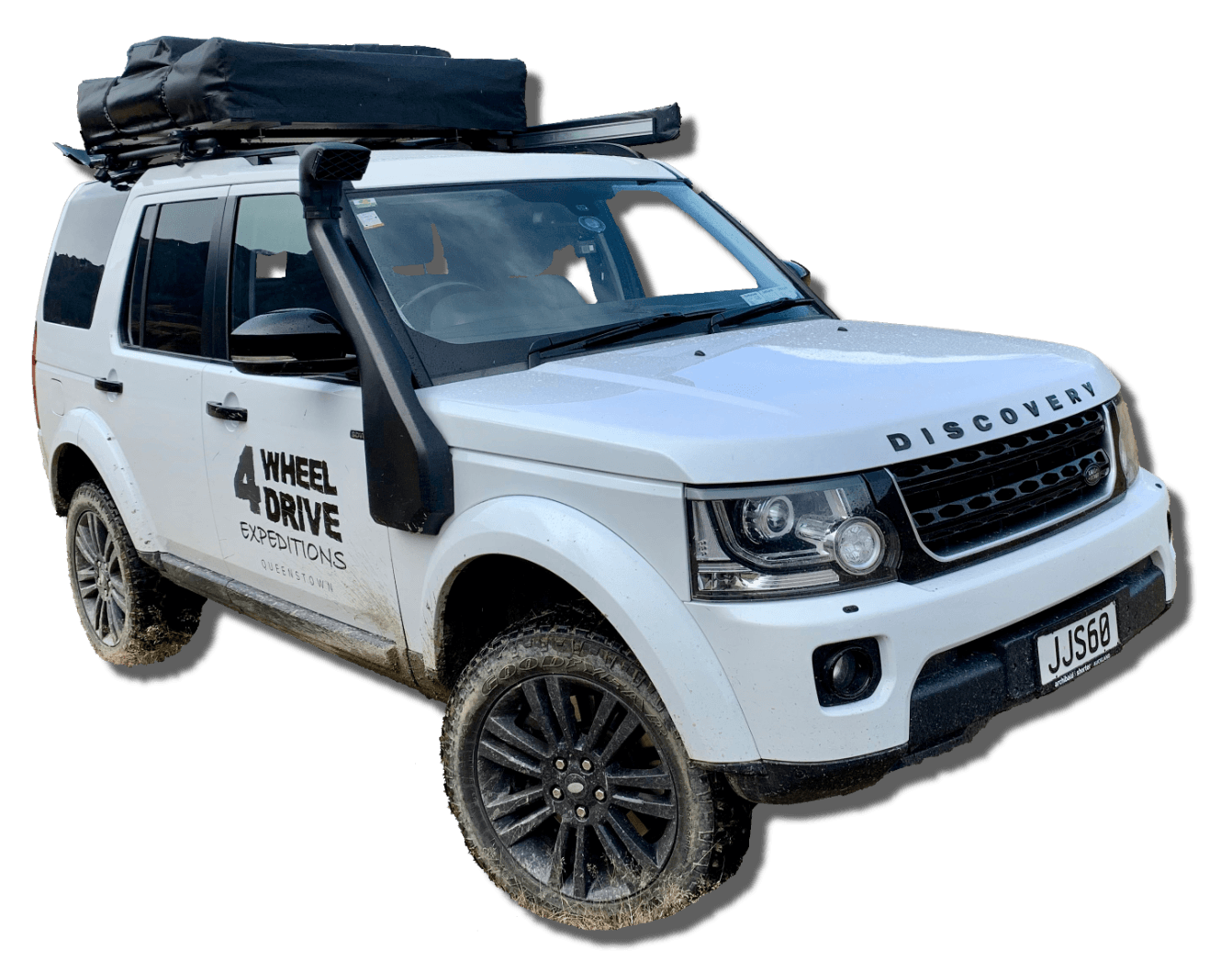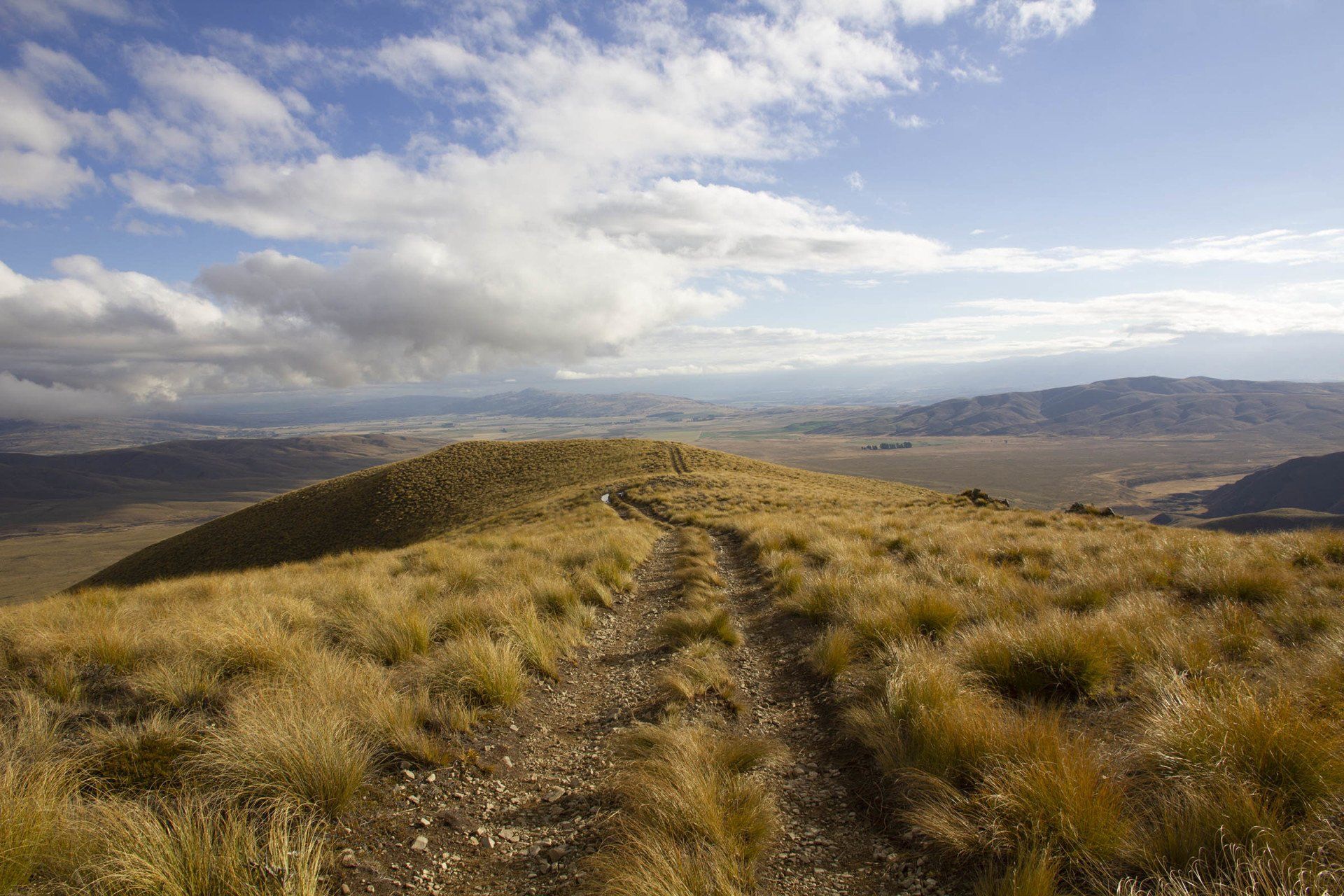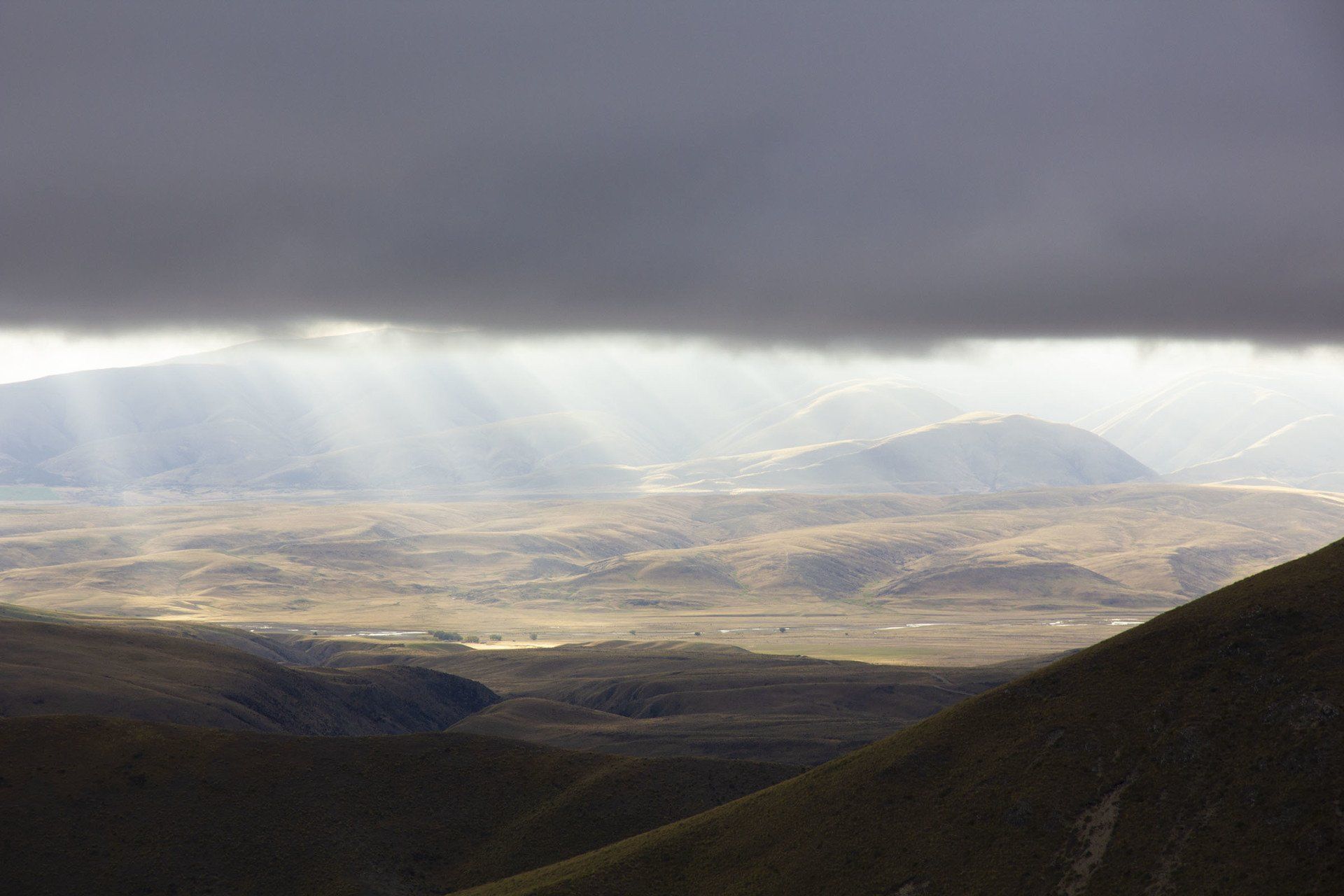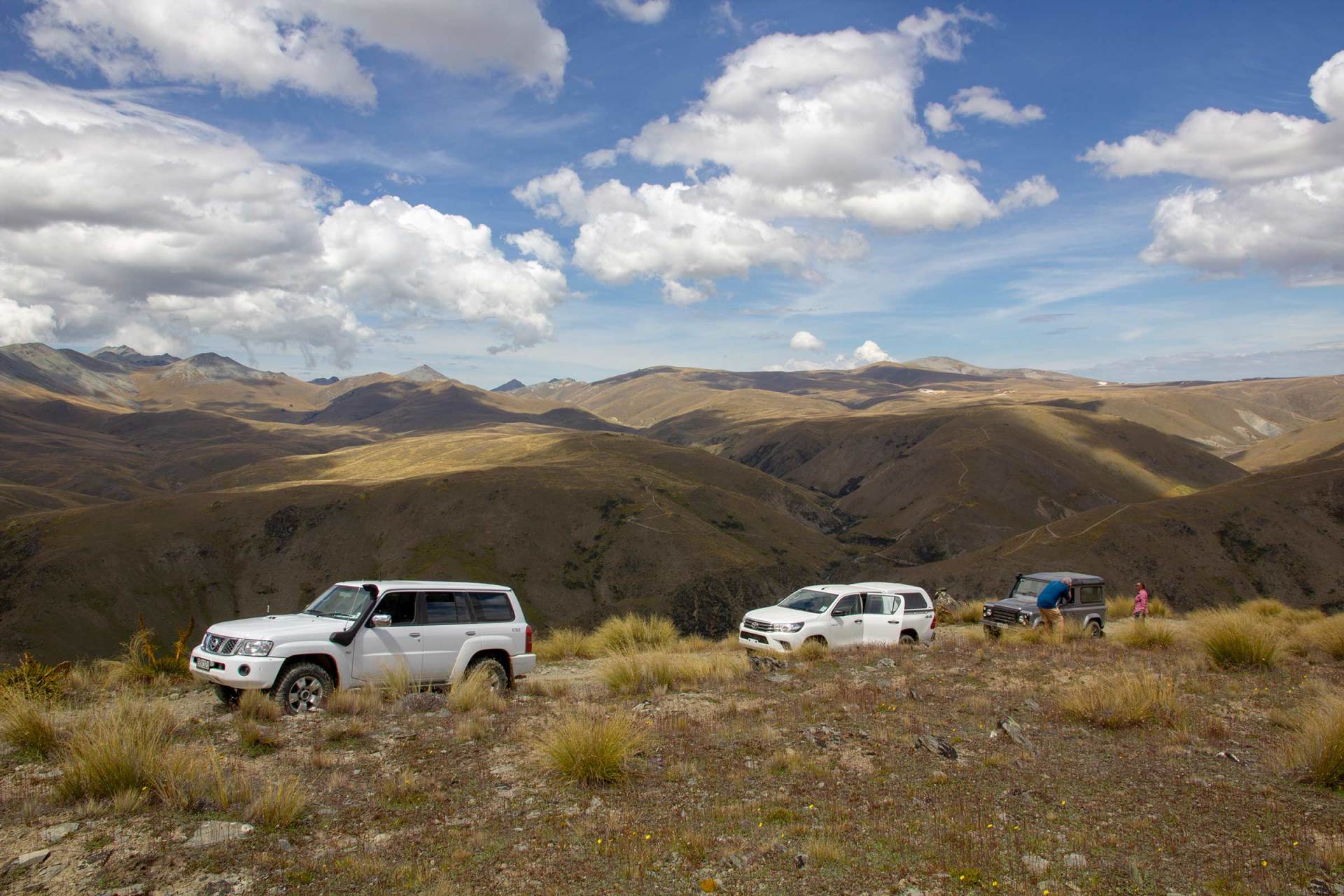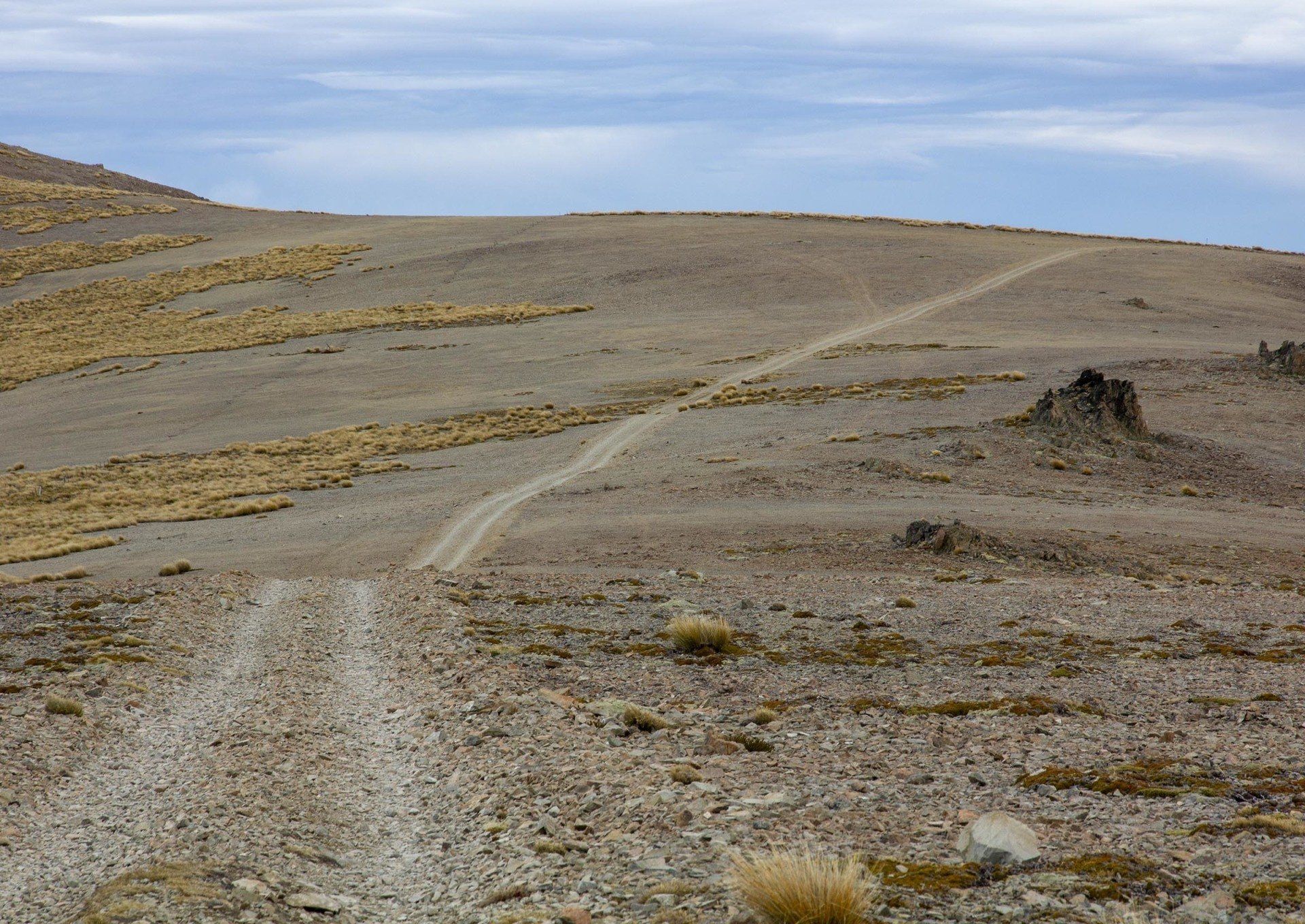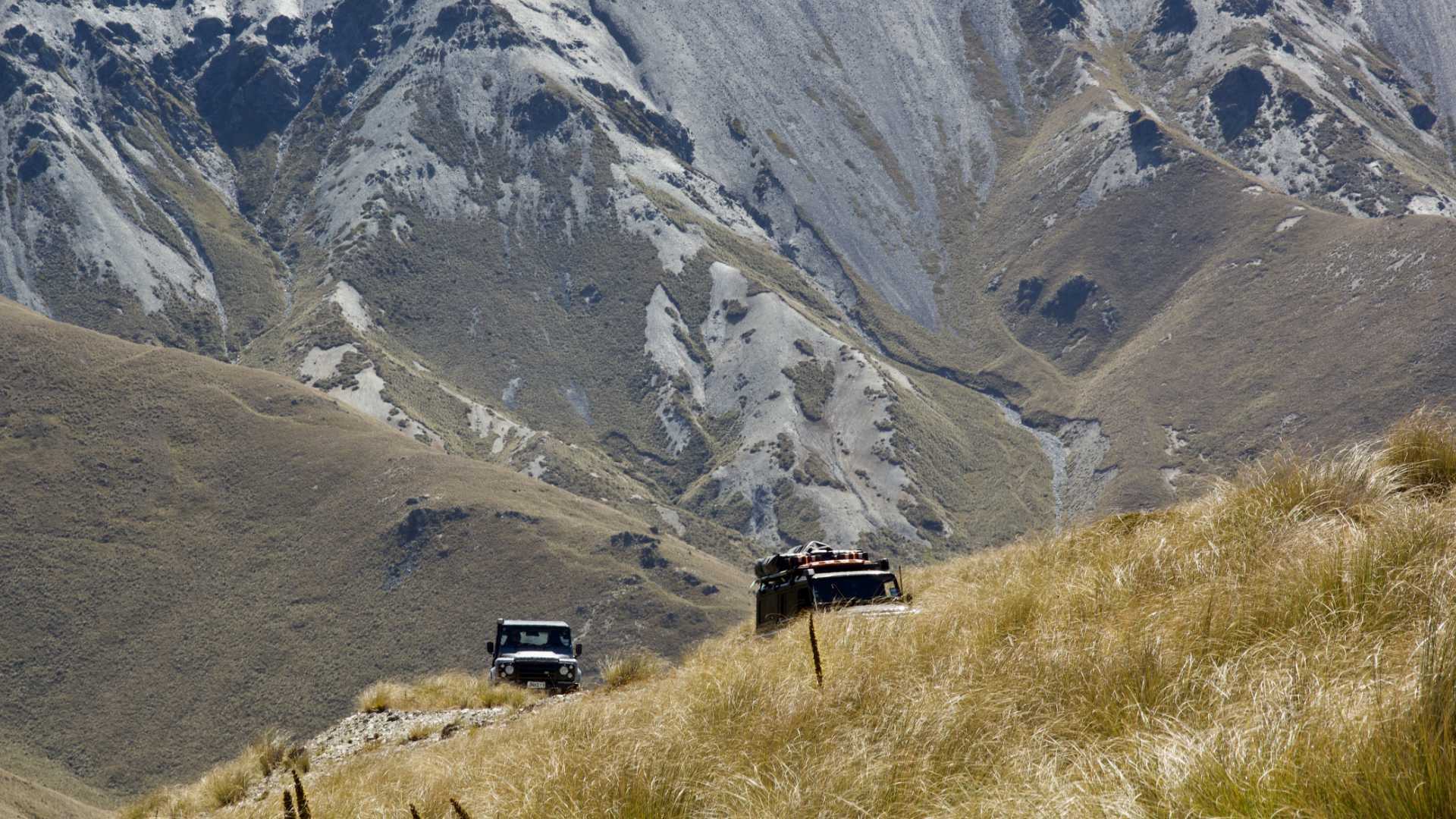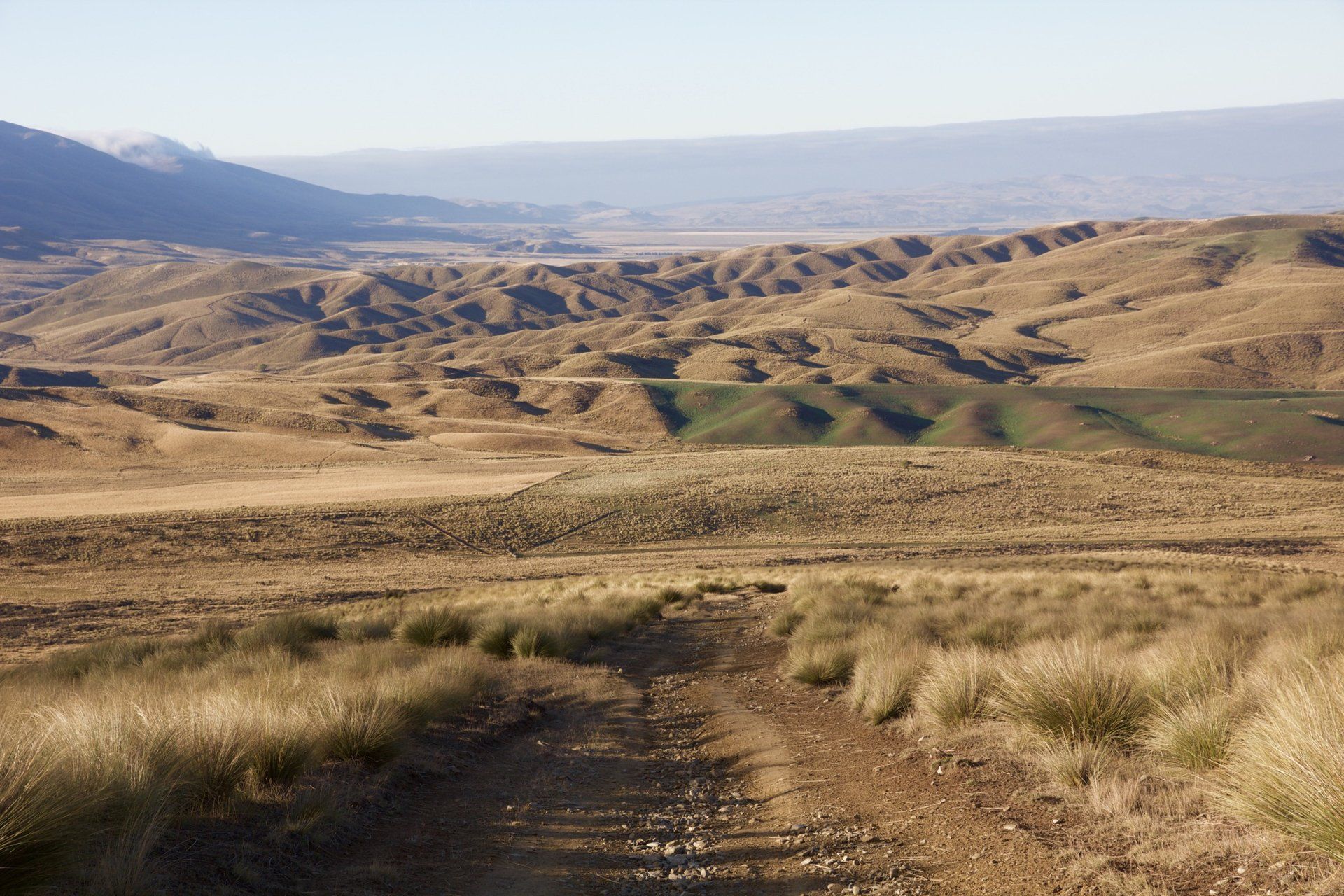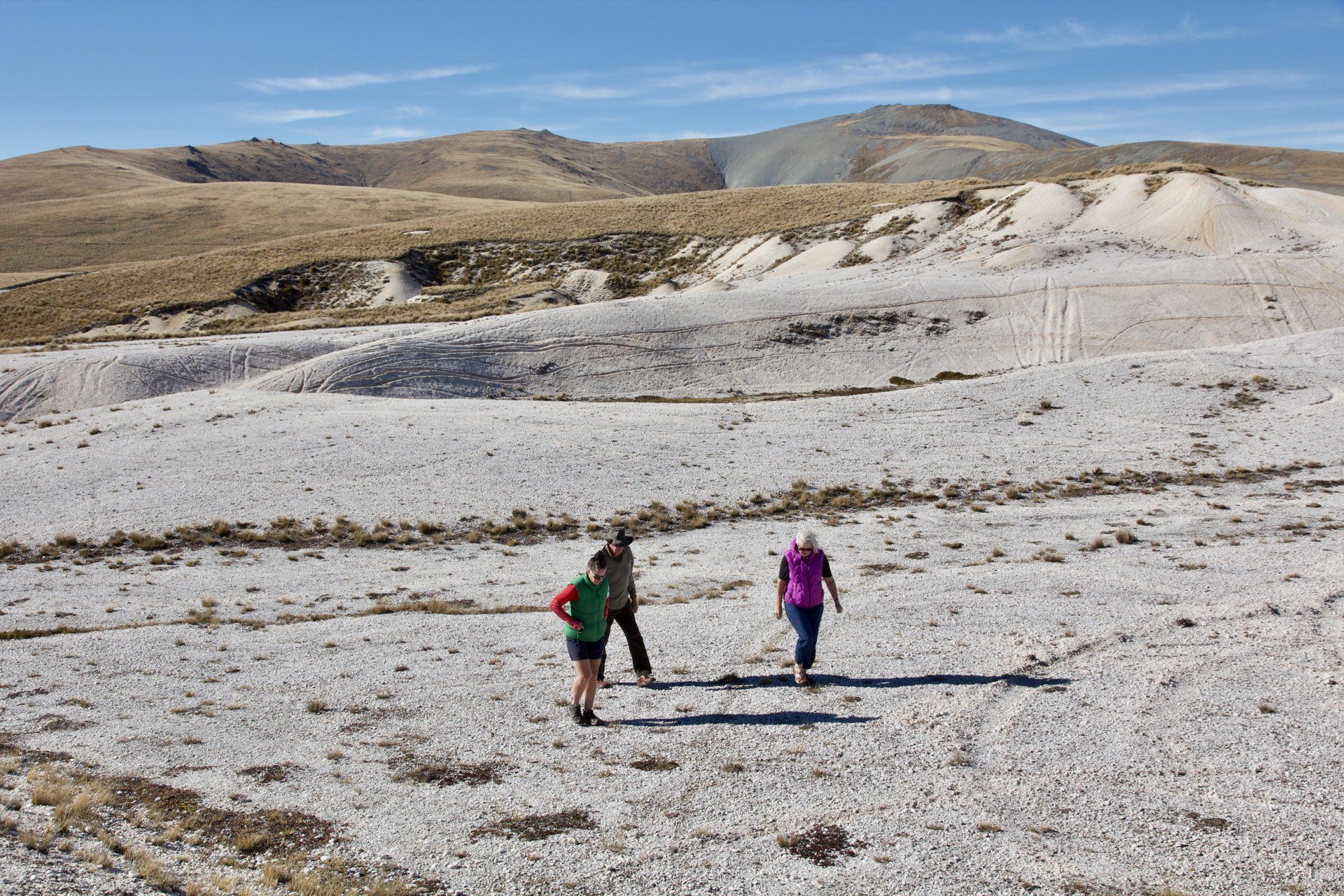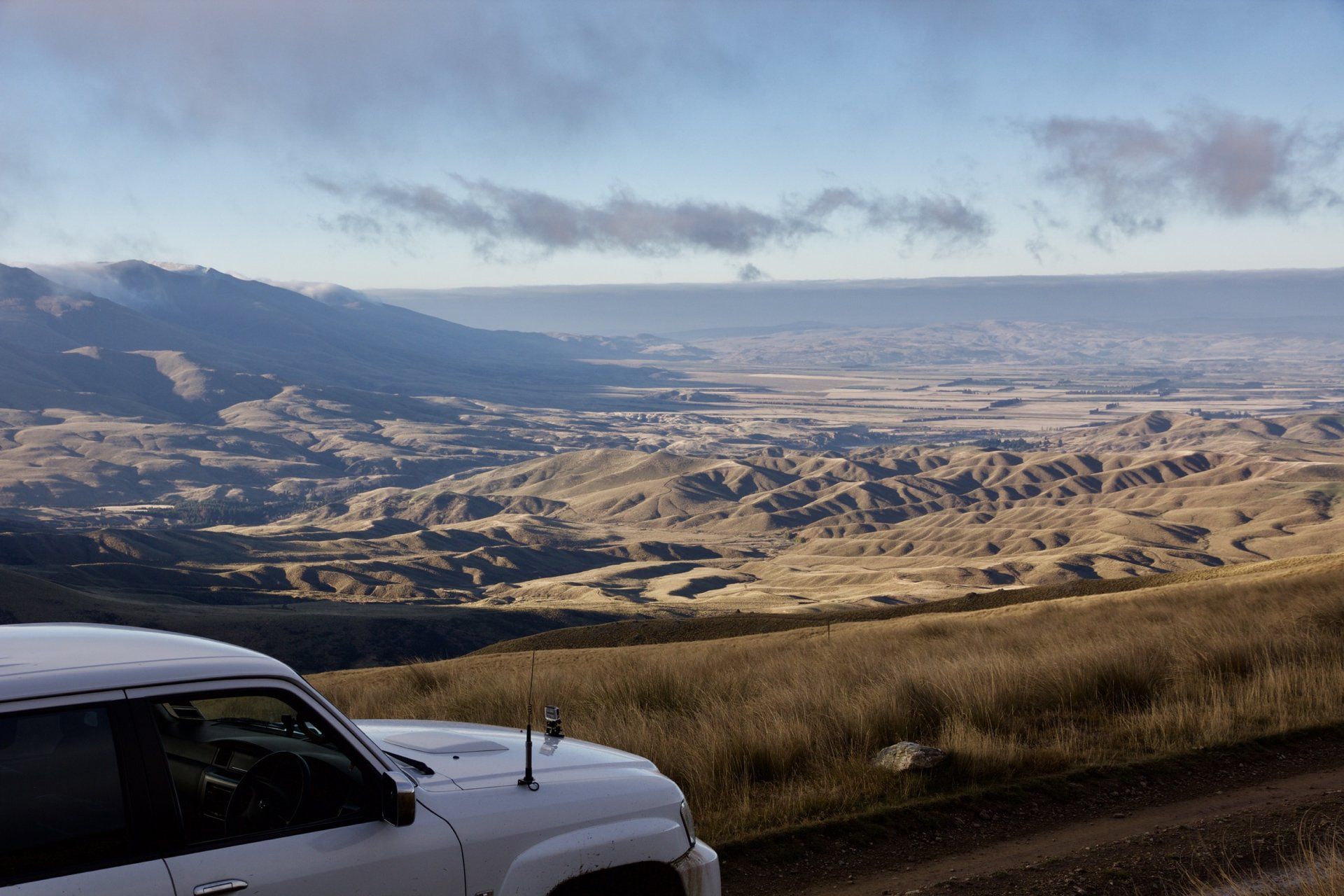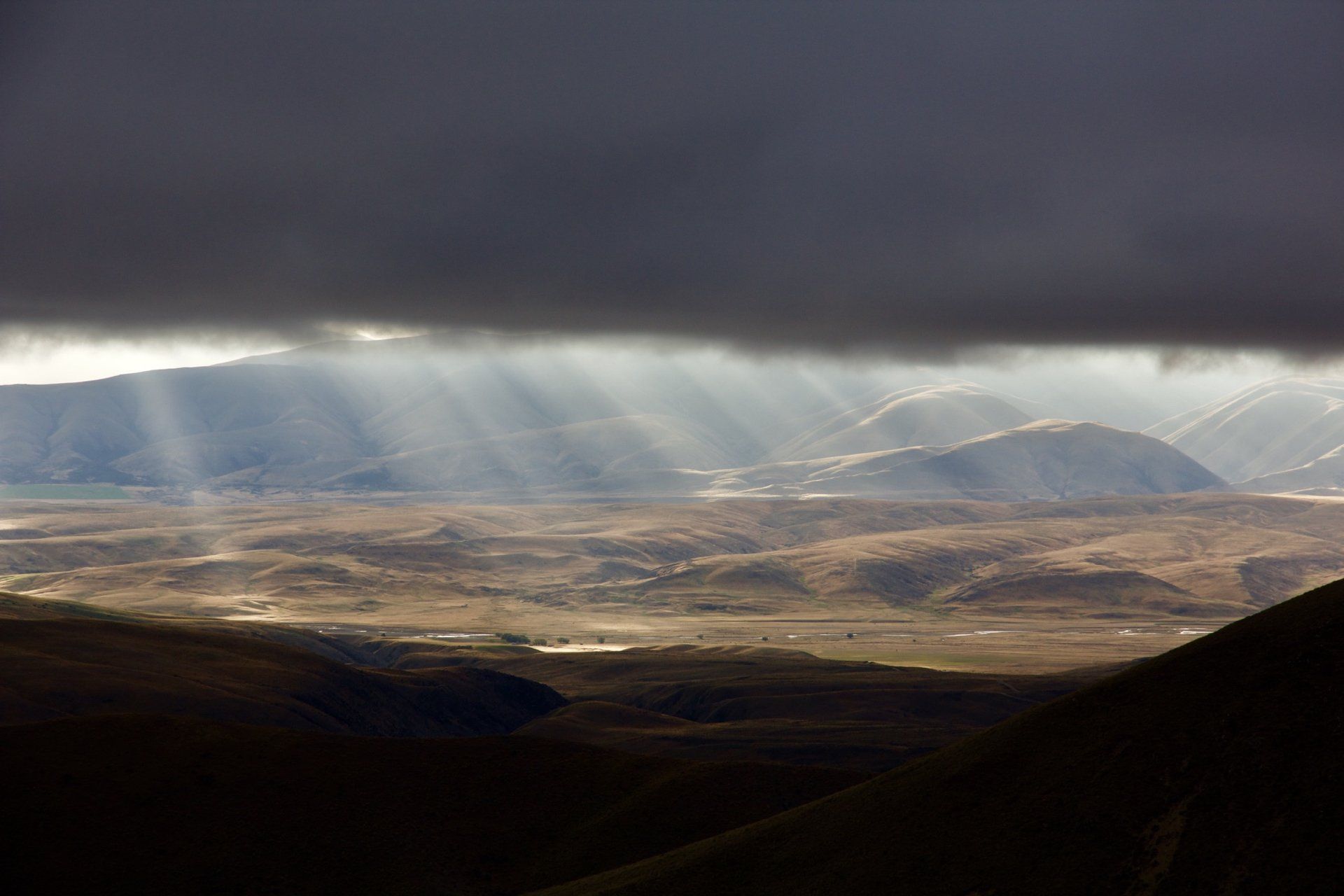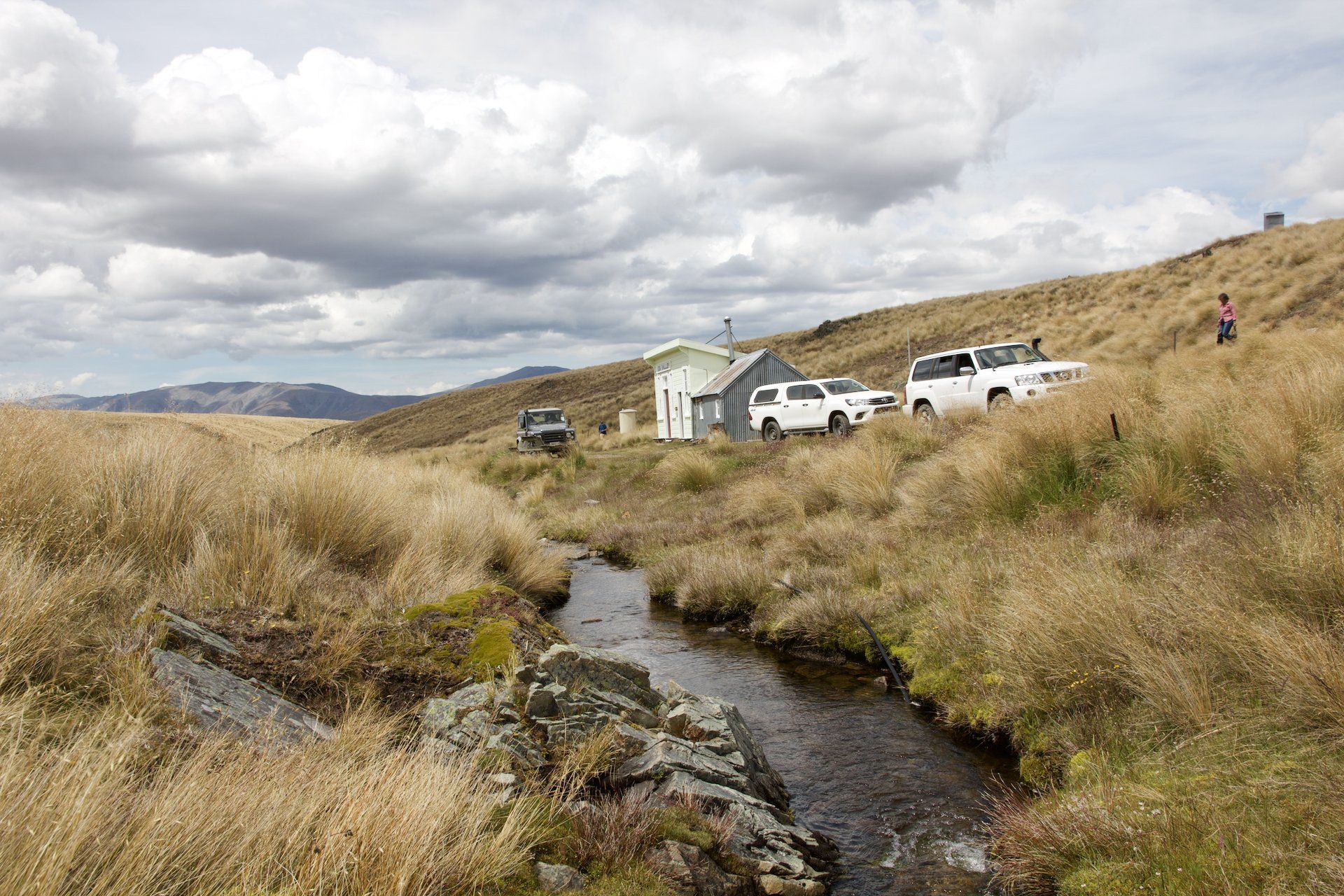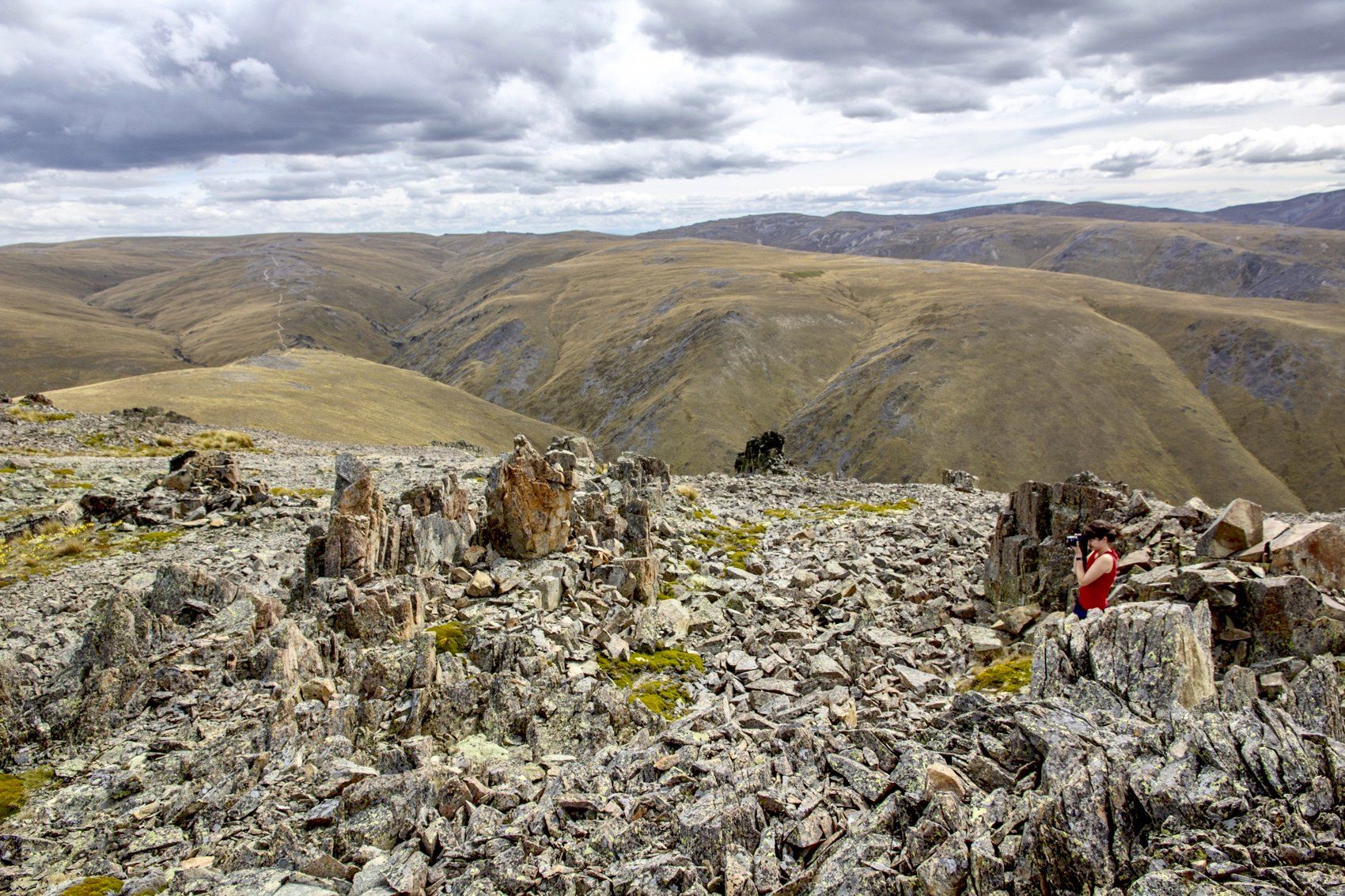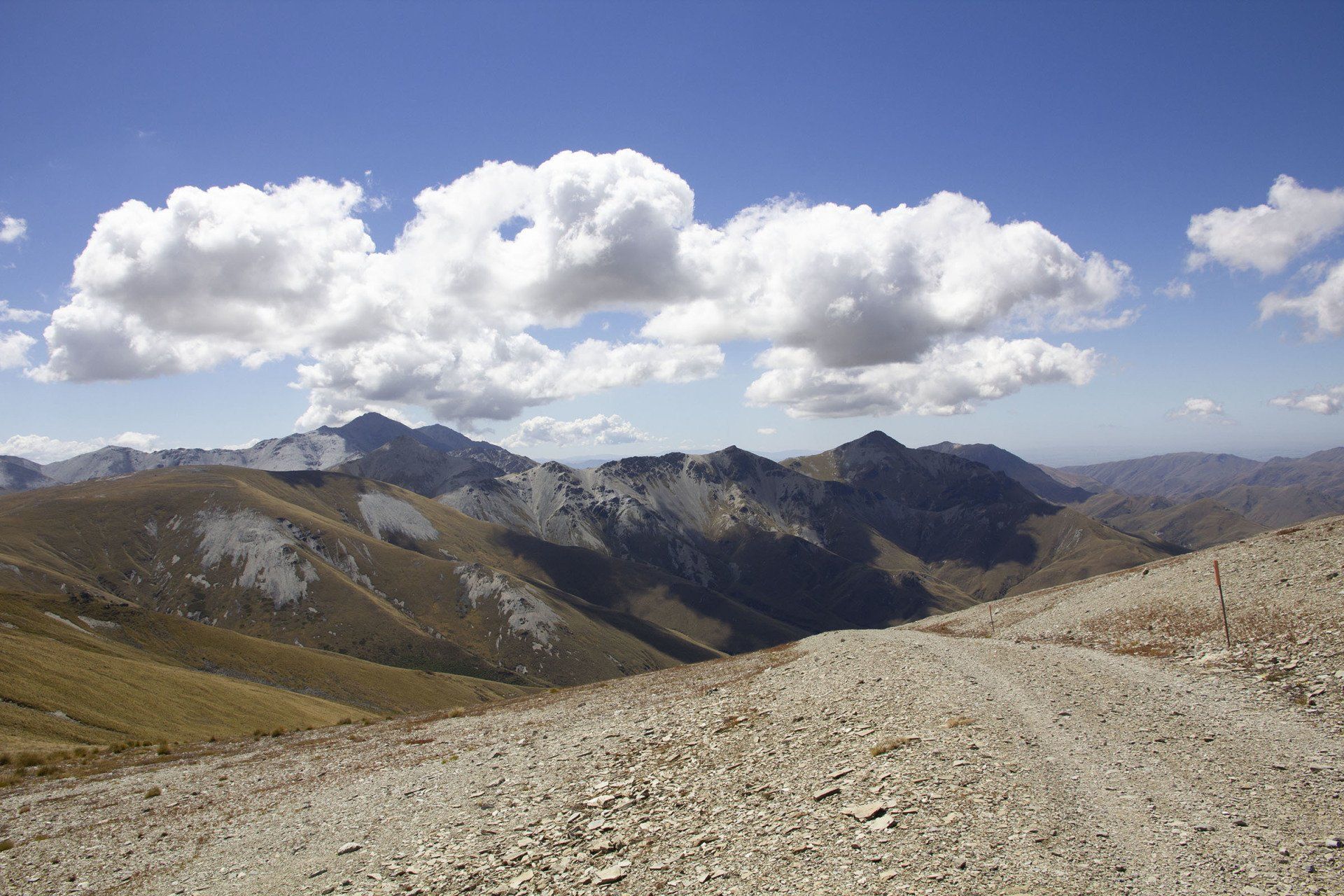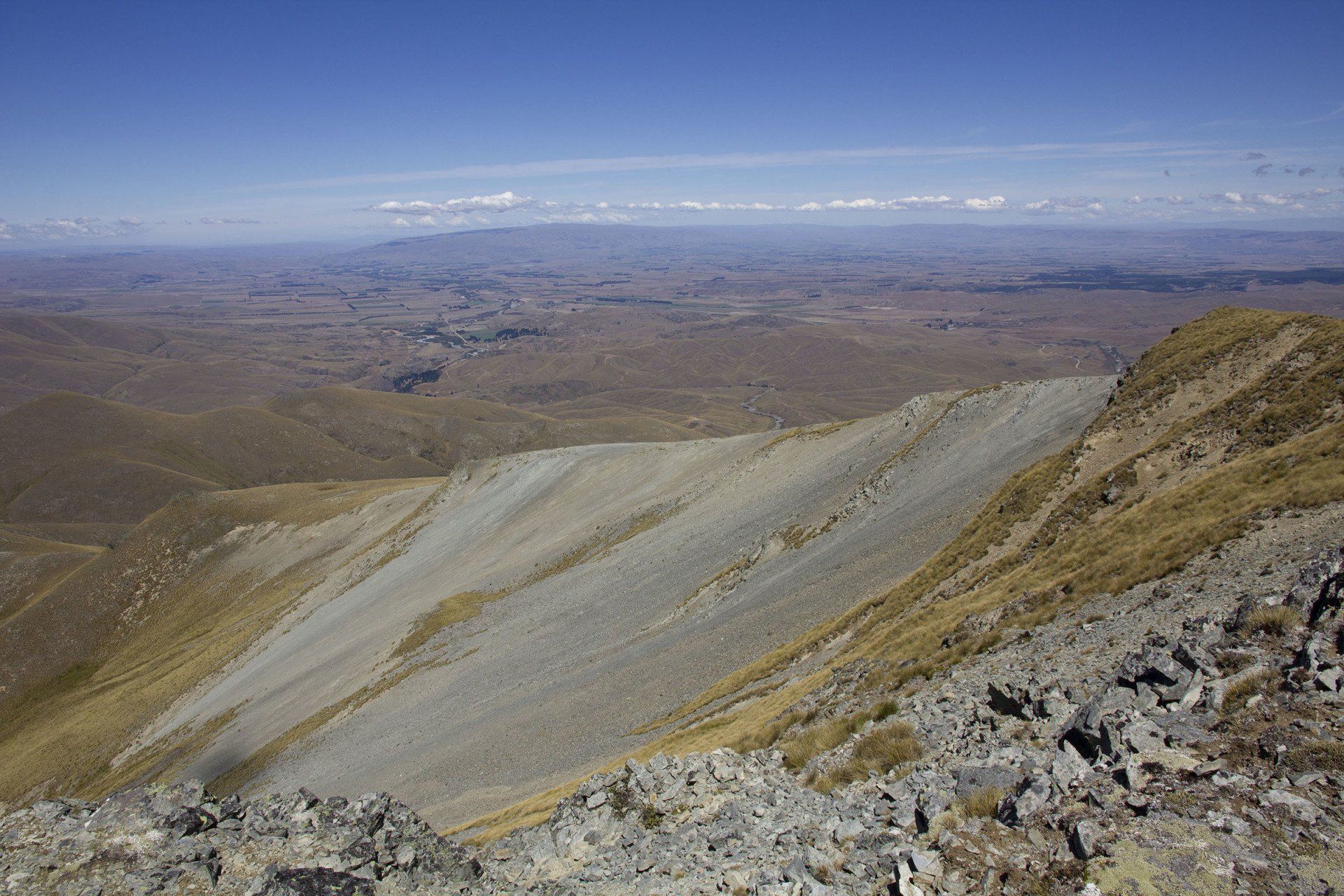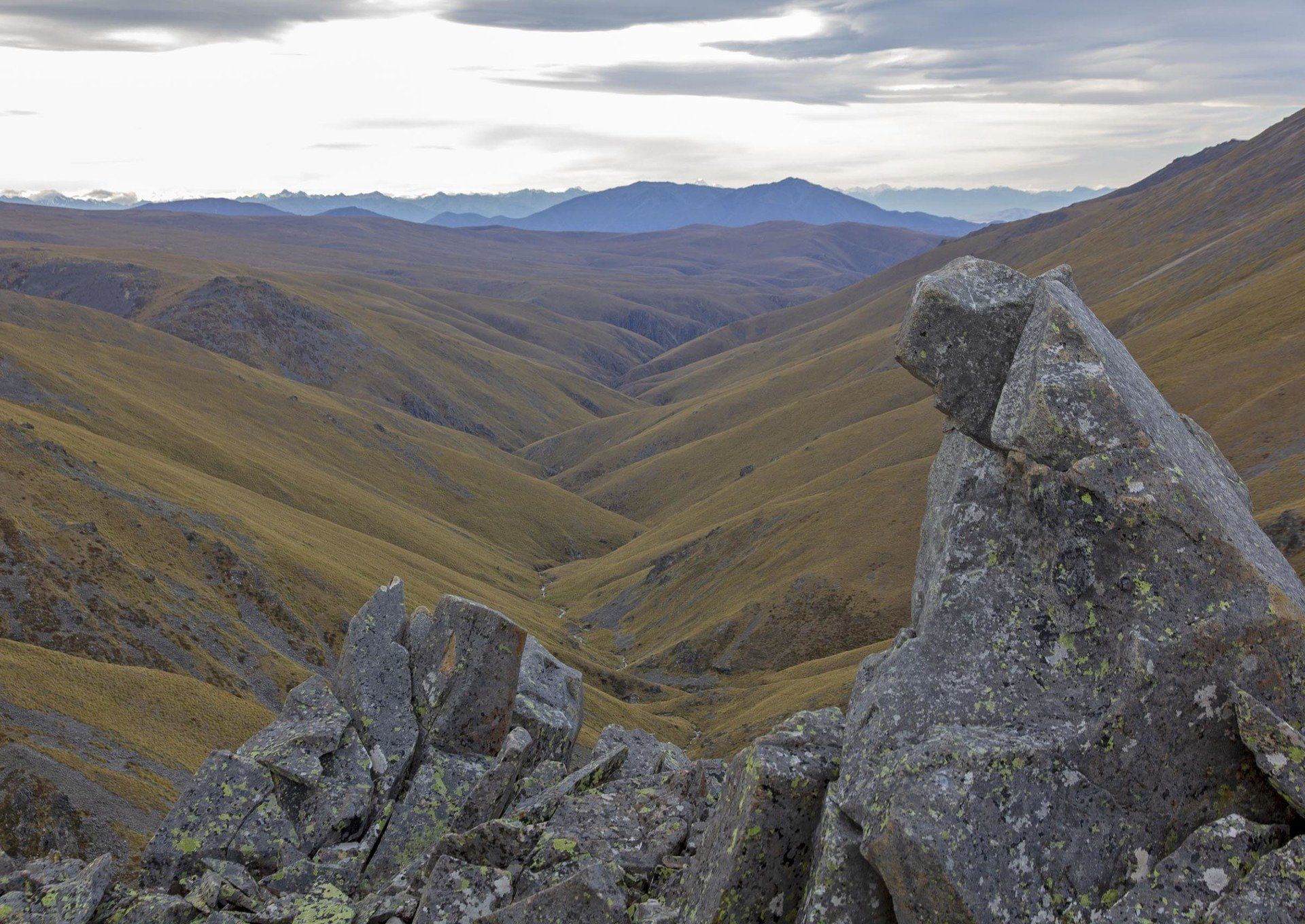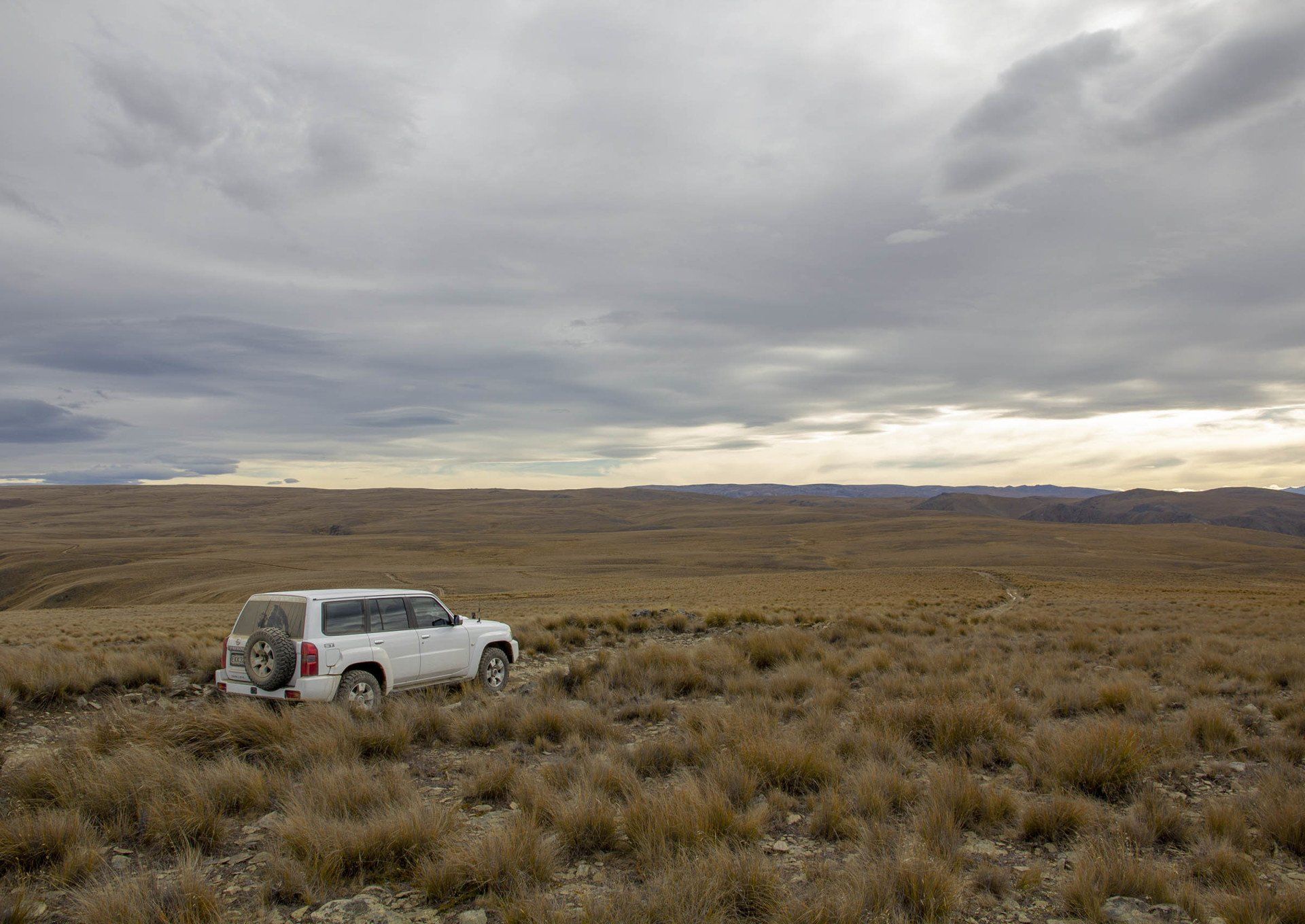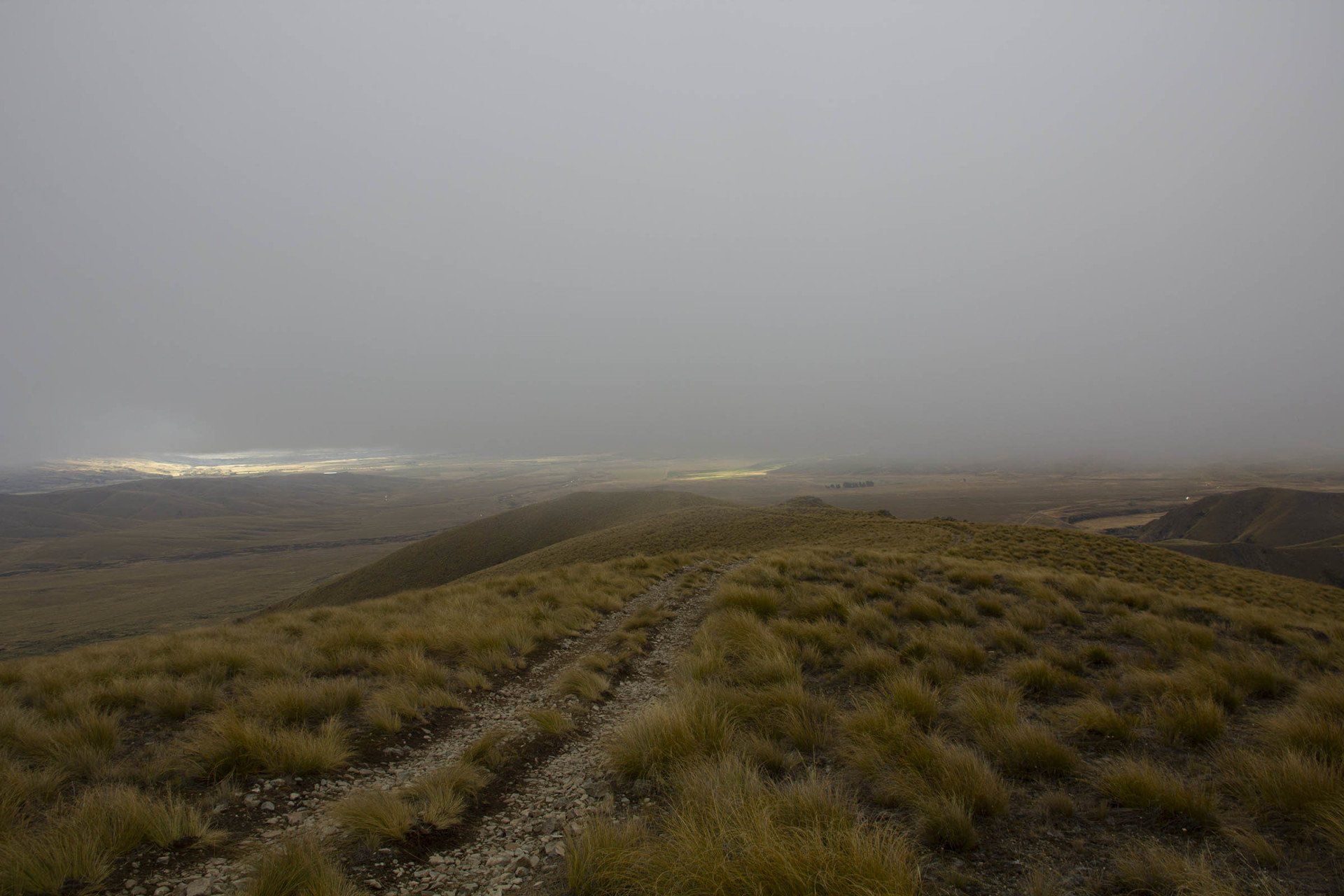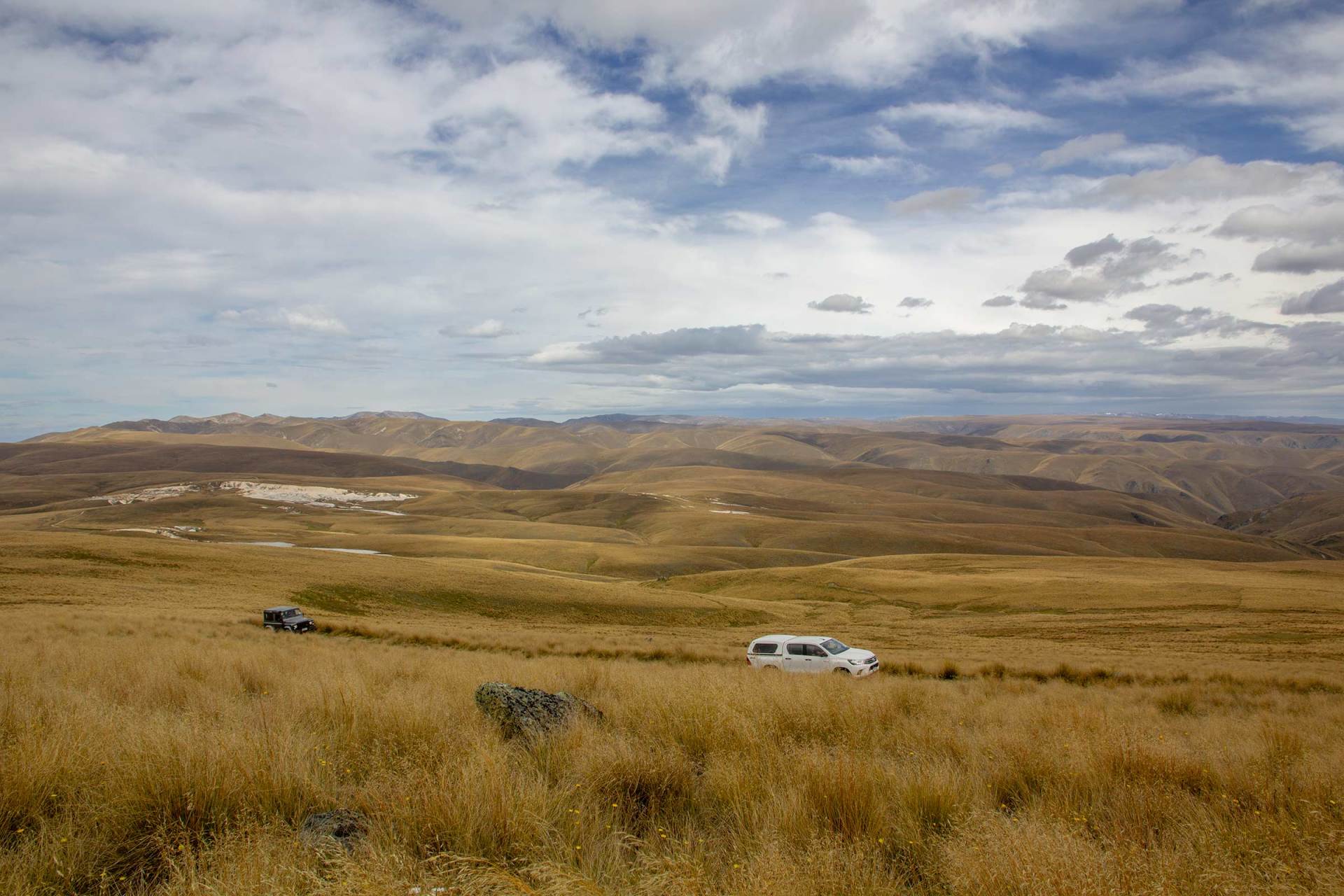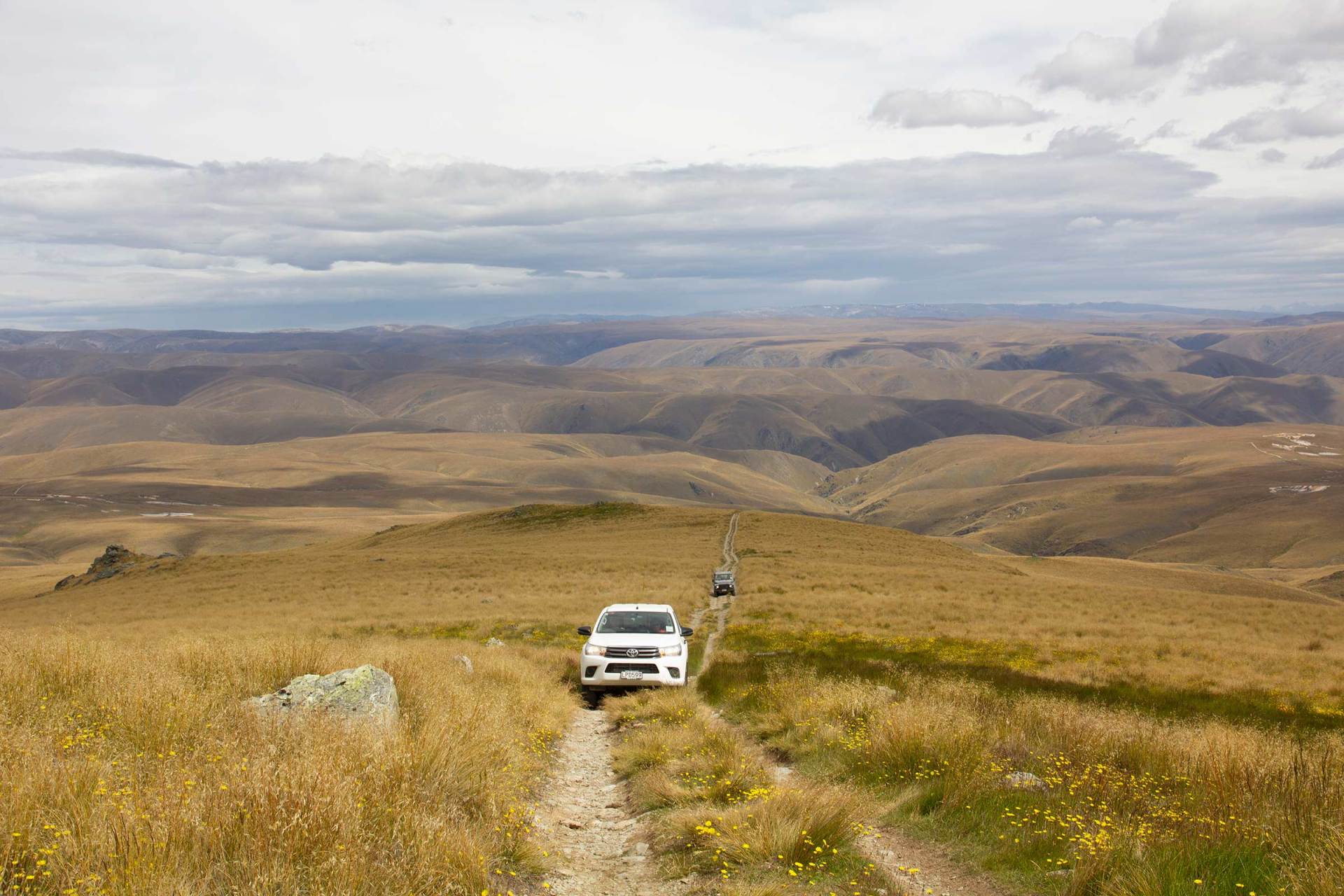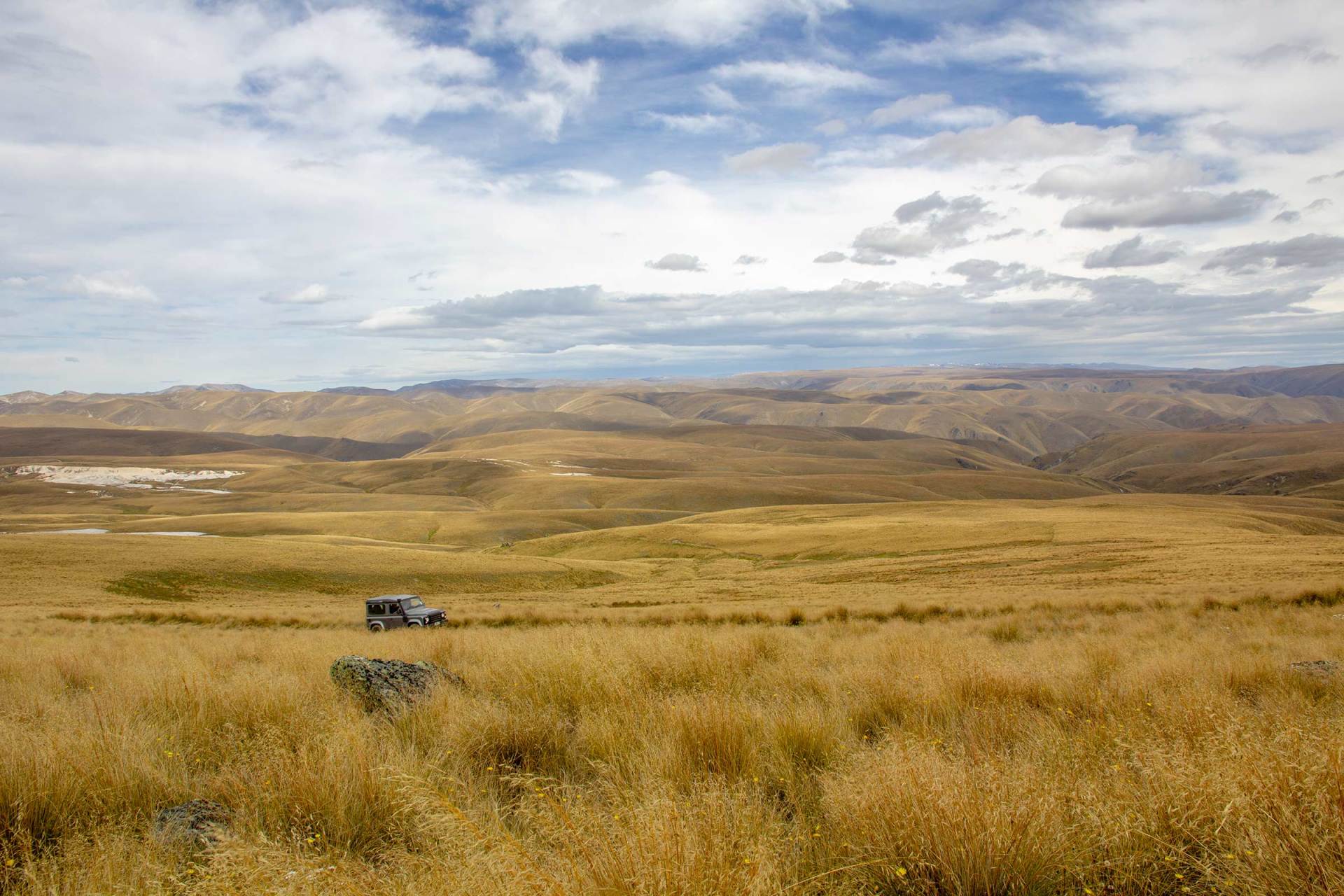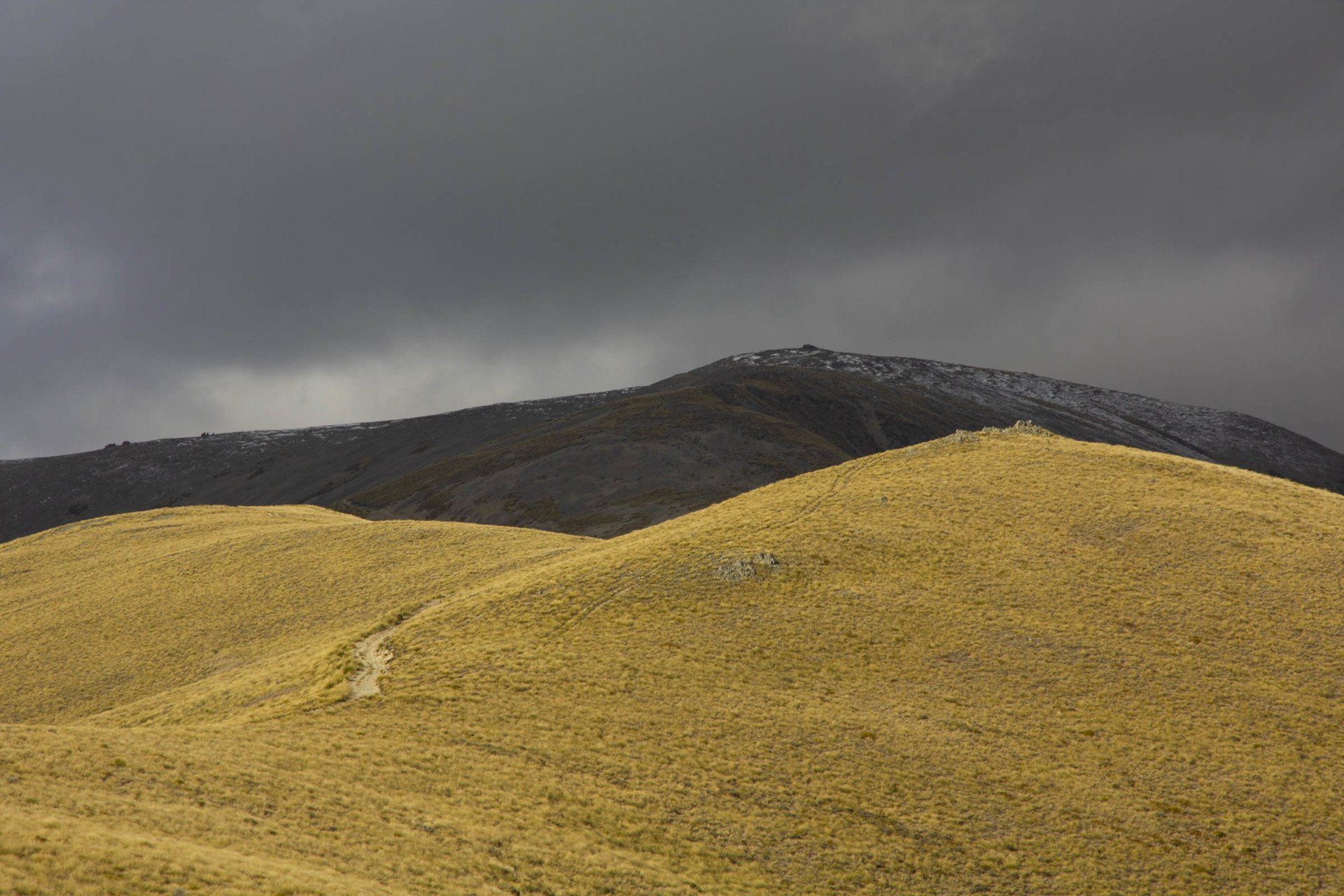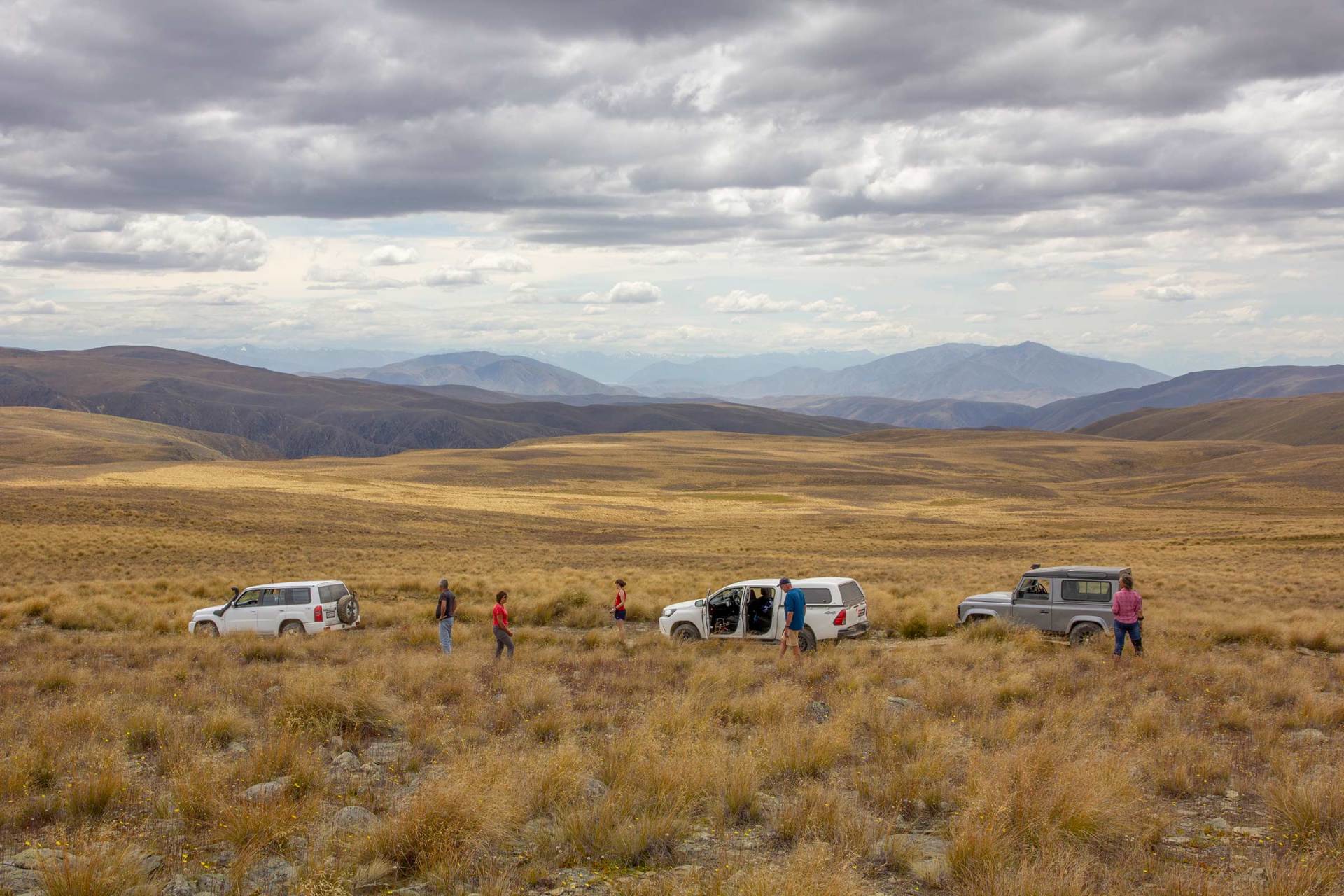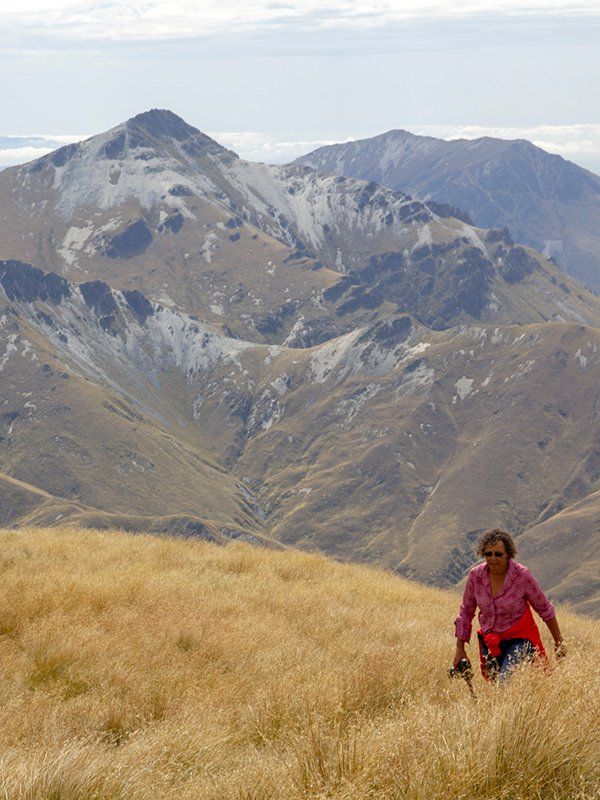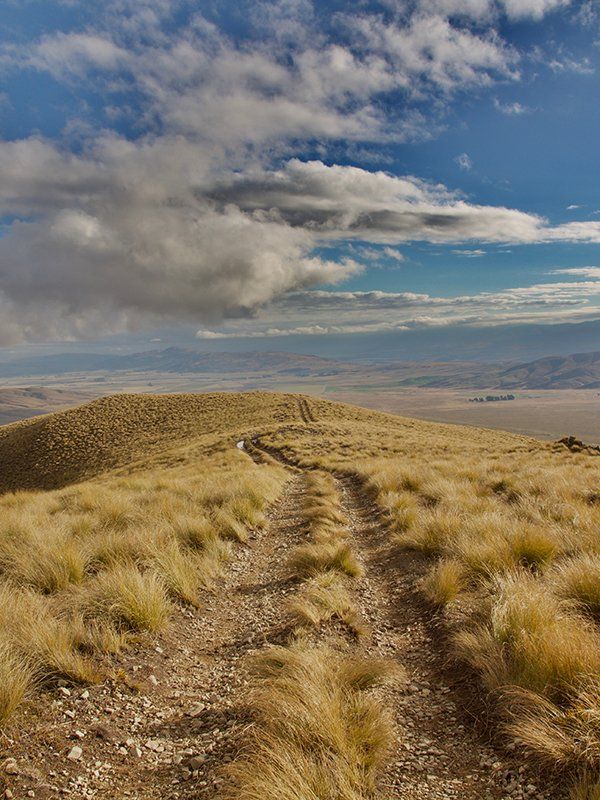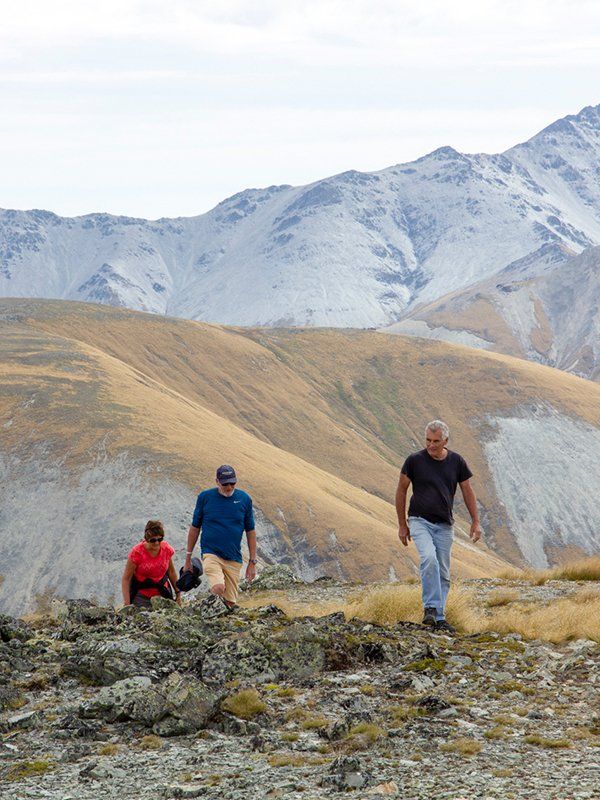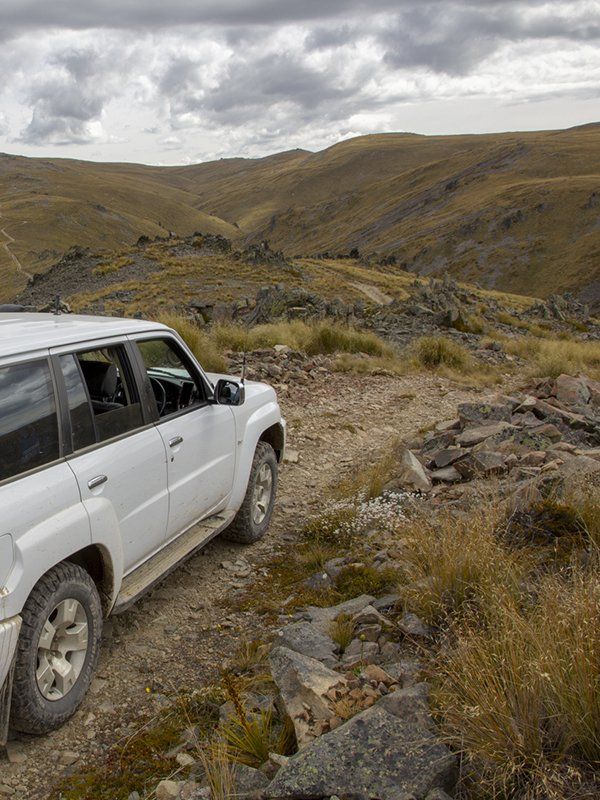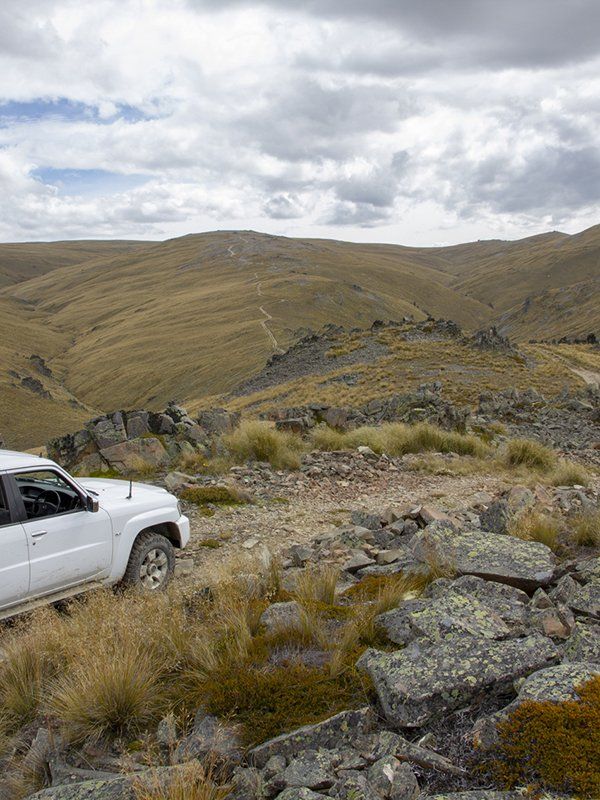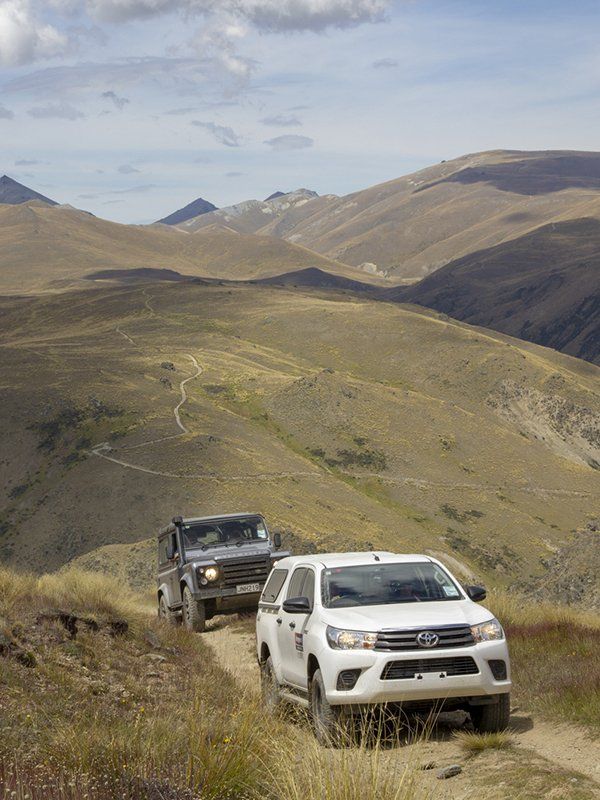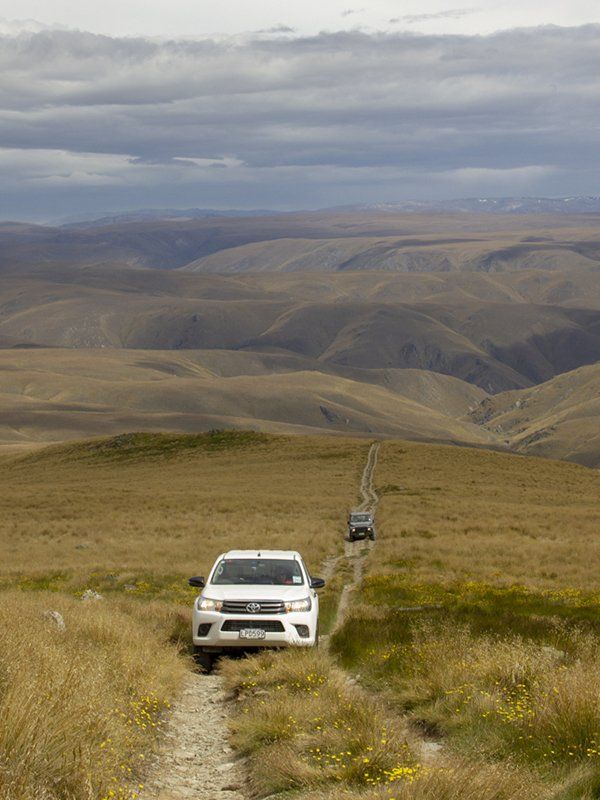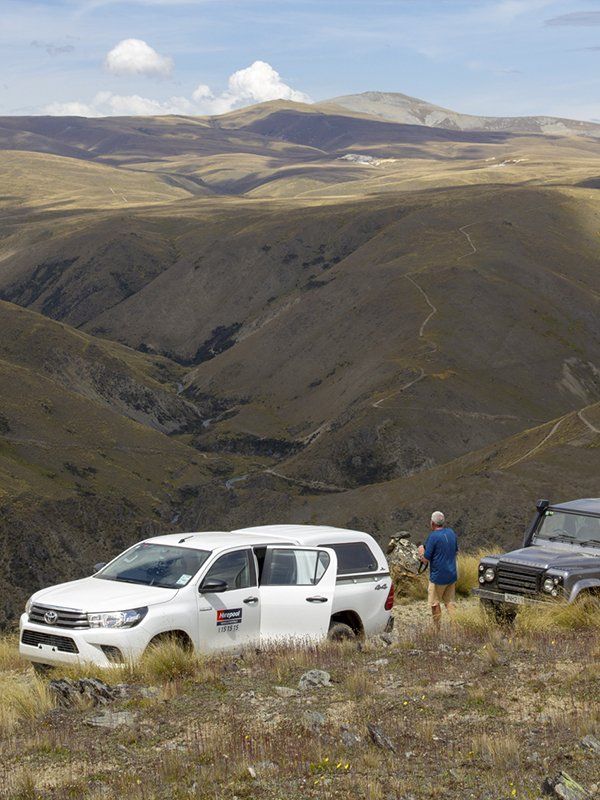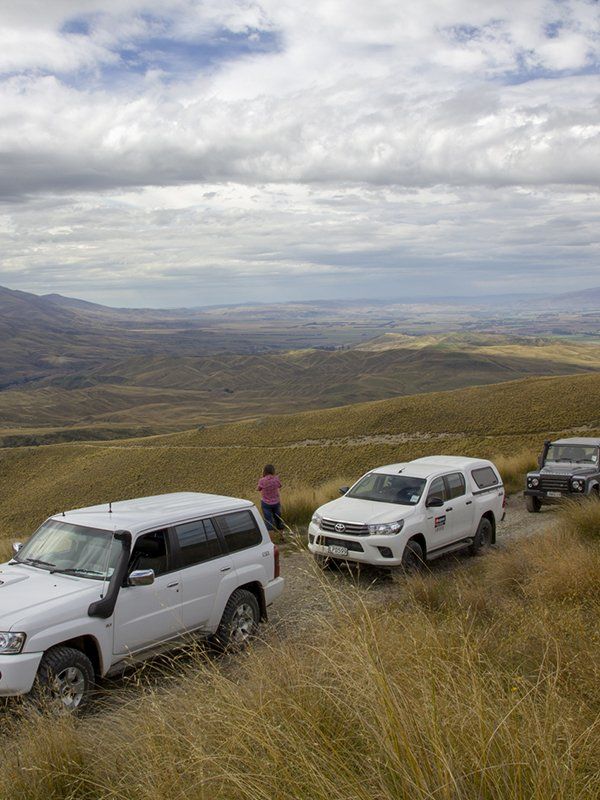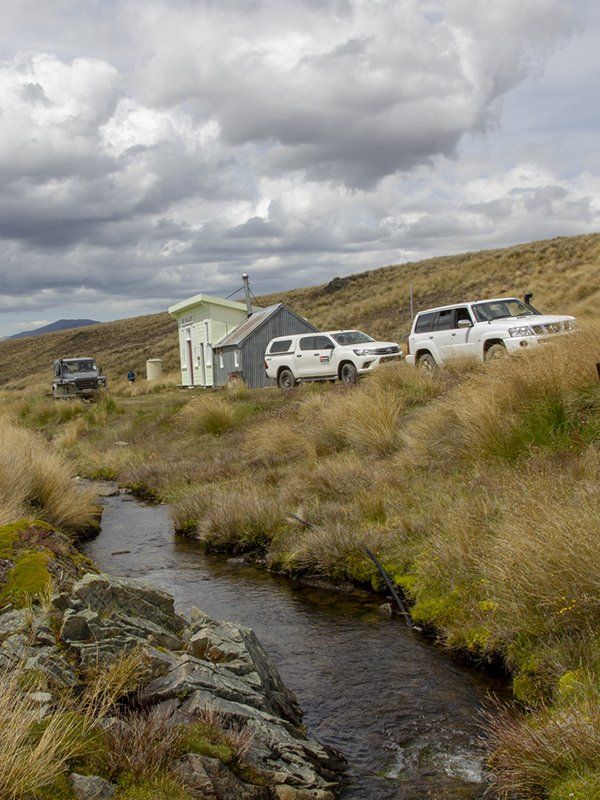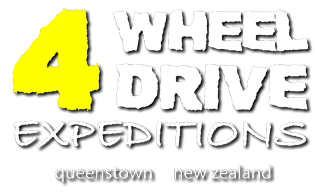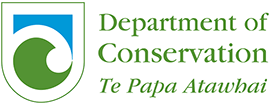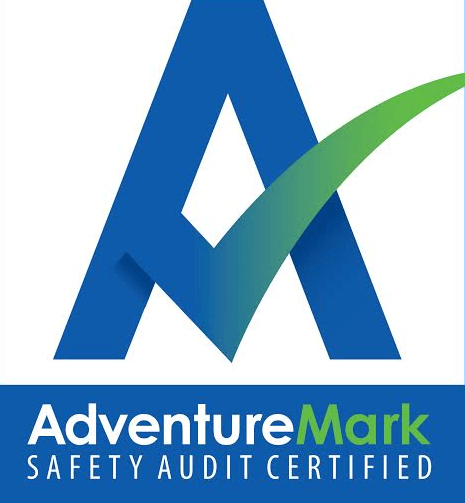OTEAKE
PRIVATE TOURS
JOIN QUEENSTOWN'S MOST EXPERIENCED 4WD
GUIDE ON A PRIVATE FOUR WHEEL DRIVE TOUR
P R I V A T E T O U R
OTEAKE
OTEAKE
PRIVATE PASSENGER TOUR
Central Otago's Oteake Conservation Area is a vast 65,000 hectare DOC estate with a landscape of golden tussock plateaus and scree slopes. The distinctive flat-topped Hawkdun Range is the area’s centrepiece and often features in paintings and photography.
These tours were designed to provide the opportunity to experience the Oteake Conservation Area and its rugged and wild environment first hand.
We can meet and collect clients from Queenstown, Cromwell, Alexandra, Ranfurly and Naseby for this tour.
Due to this tour being a very big day, please contact us before booking.
WHY CHOOSE US ? Del has 30 years of 4WD experience All tours are PRIVATE Travel in a safe, modern Land Rover
Central Otago's Oteake Conservation Area is a vast 65,000 hectare DOC estate with a landscape of golden tussock plateaus and scree slopes. The distinctive flat-topped Hawkdun Range is the area’s centrepiece and often features in paintings and photography.
These tours were designed to provide the opportunity to experience the Oteake Conservation Area and its rugged and wild environment first hand.
We can meet and collect clients from Queenstown, Cromwell, Alexandra, Ranfurly and Naseby for this tour.
Due to this tour being a very big day, please contact us before booking.
Central Otago's Oteake Conservation Area is a vast 65,000 hectare DOC estate with a landscape of golden tussock plateaus and scree slopes. The distinctive flat-topped Hawkdun Range is the area’s centrepiece and often features in paintings and photography.
These tours were designed to provide the opportunity to experience the Oteake Conservation Area and its rugged and wild environment first hand.
We can meet and collect clients from Queenstown, Cromwell, Alexandra, Ranfurly and Naseby for this tour.
Due to this tour being a very big day, please contact us before booking.
FULL DAY PRIVATE TOUR
OTEAKE CONSERVATION AREA
This is a big day with 8 hours of actual four wheel driving. The tour is not just amazing for the superbly wild views, but also the terrain we encounter driving through the Oteake. From steep narrow climbs, uneven scree faces, river crossings, remote tussock plateaus and sharp rock tors.
This day includes driving tracks to Mt Kyeburn, Buster Diggings, Guffies Creek, Tailings Hut, Otematata River, Ida Railway Hut and the Hawkdun Range.
-
INFORMATION
- This is a private tour, no other passengers
- Minimum 2 adults per booking
- Maximum 4 passengers
- Includes morning and afternoon tea
- BYO lunch, optional $25pp packed lunch available
- Duration up to 13 hours
- Includes 15% NZ Goods & Services Tax
Payment can be made direct on the day with credit cards, eftpos or cash.
We can stop off at a suitable cafe / bakery after pickup for clients to purchase their own lunch.
Different start times can be arranged by request where possible. Pick-ups at local accommodation by prior arrangement.
-
HISTORY
HISTORY
Kāi Tahu believe that Oteake, 'place of the ake', is named for the ake ake: Olearia avicenniaefolia, a conspicuous shrub daisy found in the park. Oteake is also the indigenous name for both the Kye Burn and a stream on the other side of the range.
Oteake was important to tangata whenua from coastal Otago kāika/settlements as mahika kai—places where food was obtained. Weka were hunted and plants gathered. Stone quarries in the upper Manuherikia are further evidence of iwi activity.
Oteake’s European history began when pastoral leases were issued throughout the South Island’s high country in the 1850s, creating large lease holdings such as Hawkdun, Omarama, Otekaike and Morven Hill stations. Over time they were subdivided, and more recently, through tenure review and property purchase, have become Oteake Conservation Park.
The park shows evidence of gold mining with a network of water races, prospecting pits, hut sites and alluvial mining sluicings. Buster Diggings, a spectacular sculptural landform created by alluvial gold mining, was once New Zealand’s highest altitude goldfield at 1200 m.
History information credit, DOC
-
HIGHLIGHTS
TOUR HIGHLIGHTS
- Big, remote adventure
- Quartz pinnacles
- Buster diggings
- Mt Kyeburn and 360 views
- Historic Naseby
- Danseys Pass Hotel
- Exclusive and extremely private
- Genuine kiwi experience
- Visit an area most people never see
- Ample of time allowed for photography
-
NATURE AND CONSERVATION
NATURE AND CONSERVATION
Within Oteake, Otago species often reach their northern limits and similarly, Canterbury species reach their southern limits. The park protects numerous communities, including threatened plants: cypress hebe, native broom – coral and dwarf – Ranunculus acraeus and scree pea. The dominant vegetation is narrow-leaved tussock, found in a wide range of altitudes and situations.
Oteake’s diverse habitat hosts a range of bird species, from grey warbler/riorio in the shrublands to threatened, braided riverbed species: banded dotterel/tuturiwhatu, black-billed gull/karoro, black-fronted tern/tarapiroe and occasional black stilts/kakï.
Oteake is an oasis for lizards, including various skink and gecko species, many of them threatened or uncommon. Invertebrates include moths, grasshoppers, weevils and spiders – in alpine areas they often reach giant sizes.
information credit, DOC
-
INFORMATION
- Minimum 2 adults per booking
- Maximum 4 passengers
- Includes morning and afternoon tea
- BYO lunch, optional $25pp packed lunch available
- 8 to 10 hours
- Includes 15% NZ Goods & Services Tax
Payment can be made direct on the day with credit cards, eftpos or cash.
We can stop off at a suitable cafe / bakery after pickup for clients to purchase their own lunch.
Different start times can be arranged by request where possible. Pick-ups at local accommodation by prior arrangement.
-
HISTORY
HISTORY
Kāi Tahu believe that Oteake, 'place of the ake', is named for the ake ake: Olearia avicenniaefolia, a conspicuous shrub daisy found in the park. Oteake is also the indigenous name for both the Kye Burn and a stream on the other side of the range.
Oteake was important to tangata whenua from coastal Otago kāika/settlements as mahika kai—places where food was obtained. Weka were hunted and plants gathered. Stone quarries in the upper Manuherikia are further evidence of iwi activity.
Oteake’s European history began when pastoral leases were issued throughout the South Island’s high country in the 1850s, creating large lease holdings such as Hawkdun, Omarama, Otekaike and Morven Hill stations. Over time they were subdivided, and more recently, through tenure review and property purchase, have become Oteake Conservation Park.
The park shows evidence of gold mining with a network of water races, prospecting pits, hut sites and alluvial mining sluicings. Buster Diggings, a spectacular sculptural landform created by alluvial gold mining, was once New Zealand’s highest altitude goldfield at 1200 m.
History information credit, DOC
-
HIGHLIGHTS
TOUR HIGHLIGHTS
- Big, remote adventure
- Quartz pinnacles
- Buster diggings
- Mt Kyeburn and 360 views
- Historic Naseby
- Danseys Pass Hotel
- Exclusive and extremely private
- Genuine kiwi experience
- Visit an area most people never see
- Ample of time allowed for photography
-
NATURE AND CONSERVATION
NATURE AND CONSERVATION
Within Oteake, Otago species often reach their northern limits and similarly, Canterbury species reach their southern limits. The park protects numerous communities, including threatened plants: cypress hebe, native broom – coral and dwarf – Ranunculus acraeus and scree pea. The dominant vegetation is narrow-leaved tussock, found in a wide range of altitudes and situations.
Oteake’s diverse habitat hosts a range of bird species, from grey warbler/riorio in the shrublands to threatened, braided riverbed species: banded dotterel/tuturiwhatu, black-billed gull/karoro, black-fronted tern/tarapiroe and occasional black stilts/kakï.
Oteake is an oasis for lizards, including various skink and gecko species, many of them threatened or uncommon. Invertebrates include moths, grasshoppers, weevils and spiders – in alpine areas they often reach giant sizes.
information credit, DOC
-
INFORMATION
- Minimum 2 adults per booking
- Maximum 4 passengers
- Includes morning and afternoon tea
- BYO lunch, optional $25pp packed lunch available
- 8 to 10 hours
- Includes 15% NZ Goods & Services Tax
Payment can be made direct on the day with credit cards, eftpos or cash.
We can stop off at a suitable cafe / bakery after pickup for clients to purchase their own lunch.
Different start times can be arranged by request where possible. Pick-ups at local accommodation by prior arrangement.
-
HISTORY
HISTORY
Kāi Tahu believe that Oteake, 'place of the ake', is named for the ake ake: Olearia avicenniaefolia, a conspicuous shrub daisy found in the park. Oteake is also the indigenous name for both the Kye Burn and a stream on the other side of the range.
Oteake was important to tangata whenua from coastal Otago kāika/settlements as mahika kai—places where food was obtained. Weka were hunted and plants gathered. Stone quarries in the upper Manuherikia are further evidence of iwi activity.
Oteake’s European history began when pastoral leases were issued throughout the South Island’s high country in the 1850s, creating large lease holdings such as Hawkdun, Omarama, Otekaike and Morven Hill stations. Over time they were subdivided, and more recently, through tenure review and property purchase, have become Oteake Conservation Park.
The park shows evidence of gold mining with a network of water races, prospecting pits, hut sites and alluvial mining sluicings. Buster Diggings, a spectacular sculptural landform created by alluvial gold mining, was once New Zealand’s highest altitude goldfield at 1200 m.
History information credit, DOC
-
HIGHLIGHTS
TOUR HIGHLIGHTS
- Big, remote adventure
- Quartz pinnacles
- Buster diggings
- Mt Kyeburn and 360 views
- Historic Naseby
- Danseys Pass Hotel
- Exclusive and extremely private
- Genuine kiwi experience
- Visit an area most people never see
- Ample of time allowed for photography
-
NATURE AND CONSERVATION
NATURE AND CONSERVATION
Within Oteake, Otago species often reach their northern limits and similarly, Canterbury species reach their southern limits. The park protects numerous communities, including threatened plants: cypress hebe, native broom – coral and dwarf – Ranunculus acraeus and scree pea. The dominant vegetation is narrow-leaved tussock, found in a wide range of altitudes and situations.
Oteake’s diverse habitat hosts a range of bird species, from grey warbler/riorio in the shrublands to threatened, braided riverbed species: banded dotterel/tuturiwhatu, black-billed gull/karoro, black-fronted tern/tarapiroe and occasional black stilts/kakï.
Oteake is an oasis for lizards, including various skink and gecko species, many of them threatened or uncommon. Invertebrates include moths, grasshoppers, weevils and spiders – in alpine areas they often reach giant sizes.
information credit, DOC
-
HIGHLIGHTS
TOUR HIGHLIGHTS
- Big, remote adventure
- Quartz pinnacles
- Buster diggings
- Mt Kyeburn and 360 views
- Historic Naseby
- Danseys Pass Hotel
- Exclusive and extremely private
- Genuine kiwi experience
- Visit an area most people never see
- Ample of time allowed for photography
-
NATURE AND CONSERVATION
NATURE AND CONSERVATION
Within Oteake, Otago species often reach their northern limits and similarly, Canterbury species reach their southern limits. The park protects numerous communities, including threatened plants: cypress hebe, native broom – coral and dwarf – Ranunculus acraeus and scree pea. The dominant vegetation is narrow-leaved tussock, found in a wide range of altitudes and situations.
Oteake’s diverse habitat hosts a range of bird species, from grey warbler/riorio in the shrublands to threatened, braided riverbed species: banded dotterel/tuturiwhatu, black-billed gull/karoro, black-fronted tern/tarapiroe and occasional black stilts/kakï.
Oteake is an oasis for lizards, including various skink and gecko species, many of them threatened or uncommon. Invertebrates include moths, grasshoppers, weevils and spiders – in alpine areas they often reach giant sizes.
information credit, DOC
- HIGHLIGHTS
Includes all the highlights from the Skippers Canyon and Glenorchy half day tours.
- NATURE AND CONSERVATION
NATURE AND CONSERVATION
Within Oteake, Otago species often reach their northern limits and similarly, Canterbury species reach their southern limits. The park protects numerous communities, including threatened plants: cypress hebe, native broom – coral and dwarf – Ranunculus acraeus and scree pea. The dominant vegetation is narrow-leaved tussock, found in a wide range of altitudes and situations.
Oteake’s diverse habitat hosts a range of bird species, from grey warbler/riorio in the shrublands to threatened, braided riverbed species: banded dotterel/tuturiwhatu, black-billed gull/karoro, black-fronted tern/tarapiroe and occasional black stilts/kakï.
Oteake is an oasis for lizards, including various skink and gecko species, many of them threatened or uncommon. Invertebrates include moths, grasshoppers, weevils and spiders – in alpine areas they often reach giant sizes.
information credit, DOC
VIDEOS
Additional Oteake full day tour images (click on image to open)
ADDITIONAL VIDEOS
Additional Oteake videos
FREE CALL & AFTER HOURS
0800 4WD FUN (0800 493 386)
DAYTIME 021 244 3920
FREE CALL & AFTER HOURS
0800 4WD FUN (0800 493 386)
DAYTIME 021 244 3920
4WD Expeditions Limited
PO Box 1046
Queenstown 9348
New Zealand
From New Zealand
Email : info@4WDexpeditions.nz
Freephone & After hours number : 0800 4WD FUN (493 386)
Cell : 021 244 3920
From Overseas / International
Email : info@4WDexpeditions.nz
Phone : + 64 21 244 3920
4WD Expeditions Limited
PO Box 1046
Queenstown 9348
New Zealand
From New Zealand
Email : info@4WDexpeditions.nz
Freephone & After hours number : 0800 4WD FUN (493 386)
Cell : 021 244 3920
From Overseas / International
Email : info@4WDexpeditions.nz
Phone : + 64 21 244 3920
All Rights Reserved | 4WD EXPEDITIONS LTD
